

Top 30 Biology Experiments for High-School
The field of biology offers a wide range of fascinating experiments that can deepen our understanding of the living world around us. From studying the behavior of cells to investigating the intricacies of ecosystems, biologists use a variety of methods to uncover the secrets of life.
We’ve compiled a captivating list of 30 biology experiments that are both educational and fun and also suitable for a wide range of ages.
These hands-on educational activities will not only deepen your appreciation for the intricacies of life but also fuel your curiosity and passion for scientific exploration.
So, roll up your sleeves, gather your lab equipment, and prepare to embark on an exciting adventure through the fascinating world of biology-based science experiments!
1. Grow a Butterfly
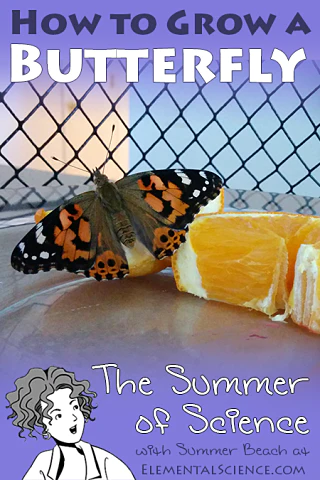
Students can gain knowledge about the various phases of development, from the egg to the larva to the pupa to the adult butterfly, by studying and taking care of a butterfly during its whole life cycle. This offers students a special chance to learn about the insect life cycle and the metamorphosis process.
Learn more: Elemental Science
2. Dissecting a Flower
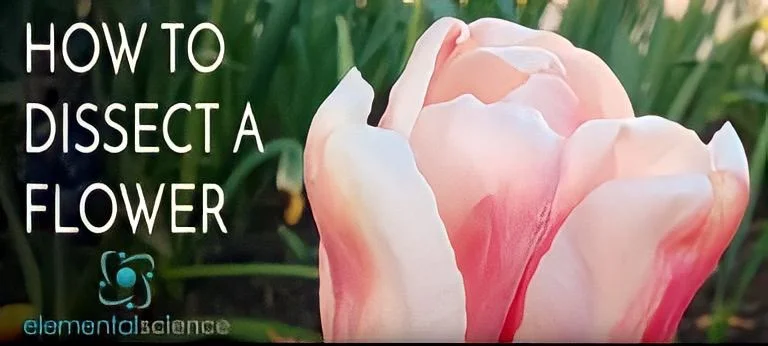
Dissecting a flower can aid students in honing their analytical and observational skills. This may also aid in their comprehension of how a flower’s various components interact to facilitate reproduction, which is the flower’s main objective.
Learn More: How to Dissect a Flower
3. Extracting a DNA

The extraction of DNA is an excellent experiment for high school students to gain a better understanding of the principles of molecular biology and genetics. This experiment helps students to understand the importance of DNA in research and its applications in various fields, such as medicine, biotechnology, and forensics.
Learn more: Extracting DNA
4. Looking at Fingerprints

Exploring fingerprints can be a fun and intriguing experiment. This experiment encourages students to develop their problem-solving skills and attention to detail, as they must carefully analyze and compare the various fingerprint patterns.
Fingerprint analysis is a fascinating and engaging experiment that can spark an interest in forensic science and provide students with a hands-on learning experience.
Learn more: Directions to Examine a Fingerprint
5. Cultivate Bacteria on Home Made Agar
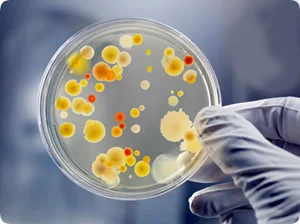
This experiment provides a hands-on learning experience for students to understand the principles of microbiology and the techniques used in bacterial culture.
This experiment can also help students to understand the importance of bacteria in our daily lives, their role in human health, and their applications in various fields, such as biotechnology and environmental science.
Learn more: Grow bacteria on Homemade Agar Plates
6. Make a Bioluminescent Lamp
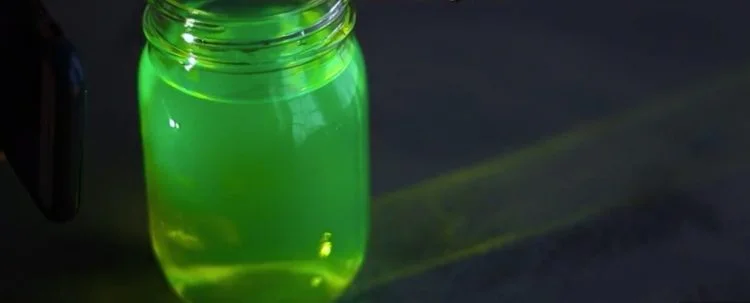
This experiment provides an excellent opportunity for high school students to learn about bioluminescence and the principles of genetic engineering.
Creating a bioluminescent lamp is a fun and engaging way to explore the intersection of biology, chemistry, and physics, making it a perfect experiment for students interested in science and technology.
Learn more: Make Glowing Water
7. Make Plants Move with Light
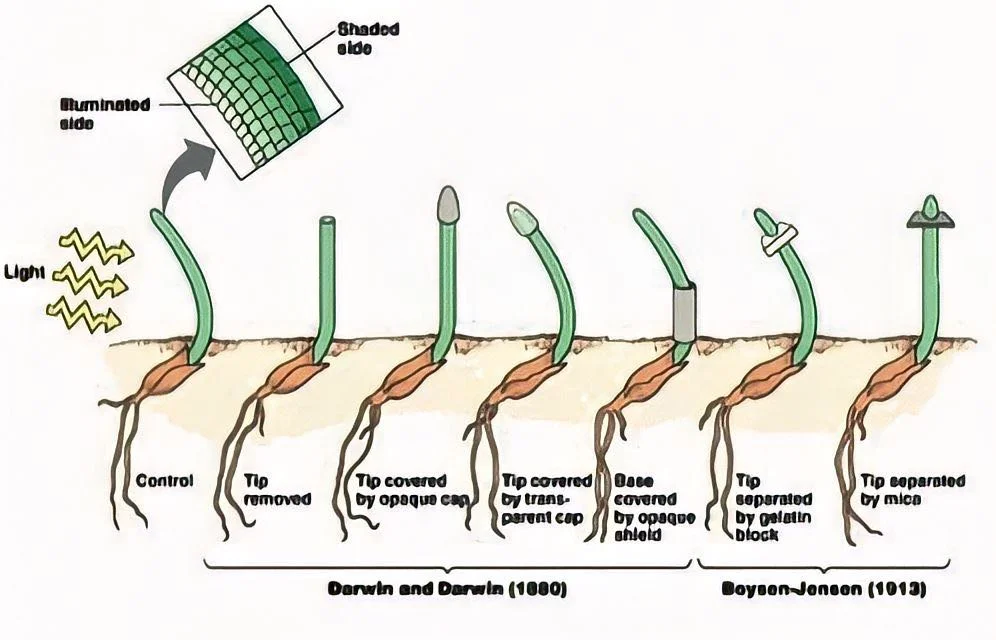
This experiment can help students understand the role of light in plant growth and photosynthesis and the importance of light as an environmental factor for plant survival.
Learn more: Experiments with Phototropism
8. Test the Five-Second Rule
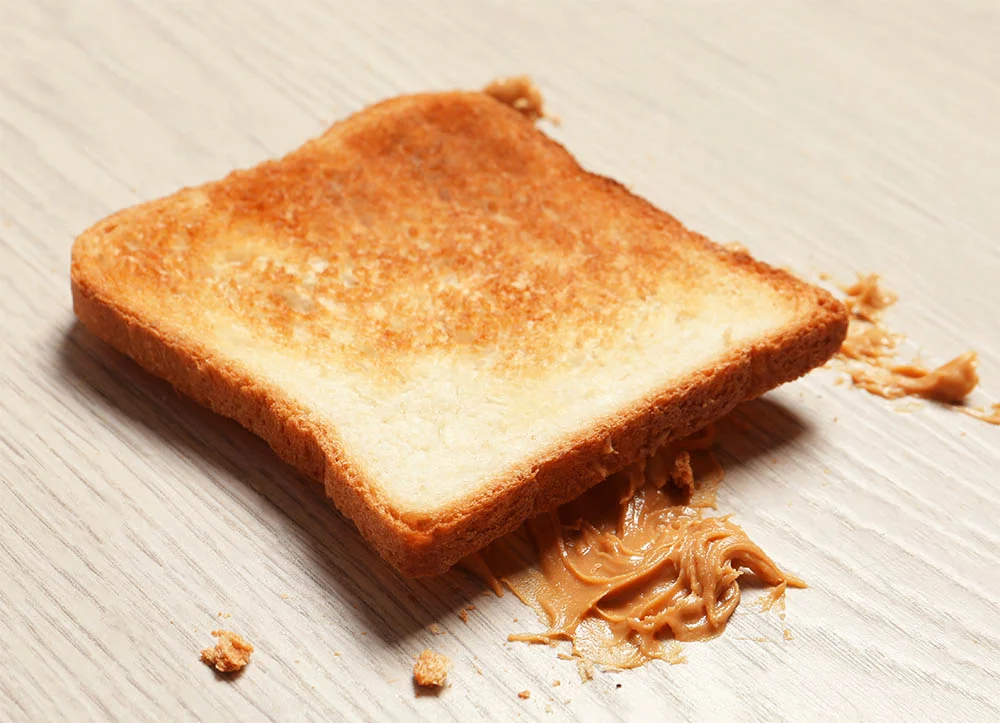
The “5-second rule” experiment is a simple and fun way to investigate the validity of the popular belief that it is safe to eat food that has been dropped on the ground for less than 5 seconds.
The experiment is an engaging and informative way to explore the science behind a common belief and promote critical thinking and scientific inquiry among students.
Learn more: Five Second Rule
9. Examine How Antibiotics Affect Bacteria
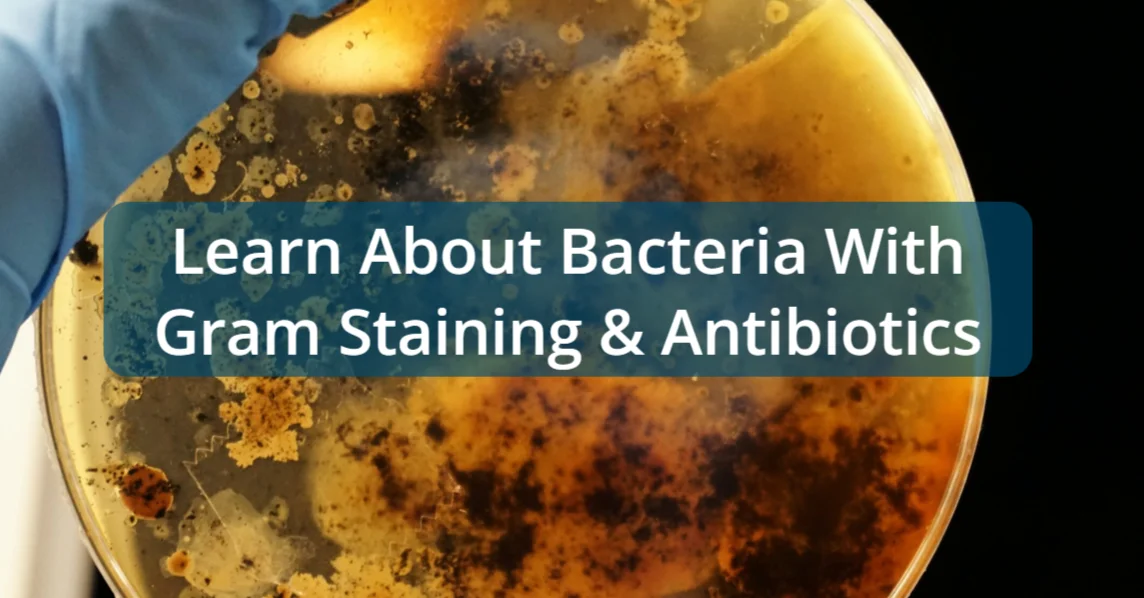
This experiment is an excellent opportunity for high school students to develop their laboratory skills, such as aseptic technique and bacterial culture, and understand the principles of antibiotic resistance and its implications for human health.
Examining how antibiotics affect bacteria is a fascinating and educational experiment that promotes scientific inquiry and critical thinking among students.
Learn more: Learn About Bacteria
10. Look for Cell Mitosis in an Onion
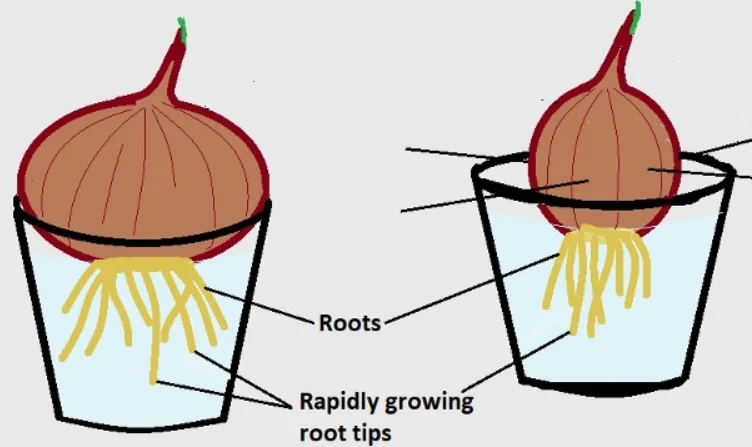
This experiment is an excellent opportunity for high school students to develop their microscopy skills and understand the biological basis of growth and development in plants. This experiment is a fun and informative way to explore the world of cells and their role in the growth and development of living organisms.
Learn more: Onion Root Mitosis
11. Test the Effects of Disinfectants
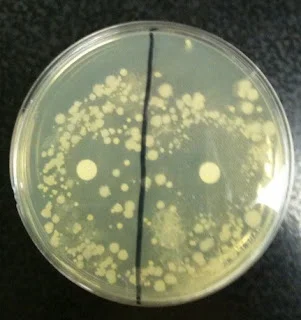
Testing the effects of disinfectants is an important process in determining their efficacy in killing or reducing the number of microorganisms on a surface or object. Disinfectants can be hazardous if not used correctly, and testing their effects can help students understand how to use them safely.
Students can learn about proper handling techniques and how to interpret safety labels and warning signs.
Learn more: Antiseptic and Disinfectants
12. Microwave Seed Gardening
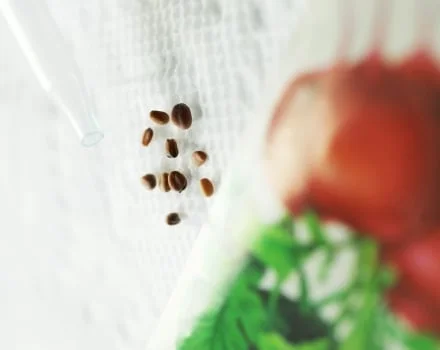
Microwave seed gardening is a quick and efficient method of germinating seeds, microwave seed gardening can be a useful method for starting seeds, but it should be used with care and in conjunction with other germination methods to ensure the best possible results.
Learn more: Microwave plant
13. Water Bottle Bacteria Swab

This experiment can be a fun and informative way to learn about the importance of keeping water bottles clean and free from harmful bacteria. It can also be used to compare the cleanliness of different types of water bottles, such as metal, plastic, or glass.
Learn more: Swabbing Water Bottles
14. Frog Dissection
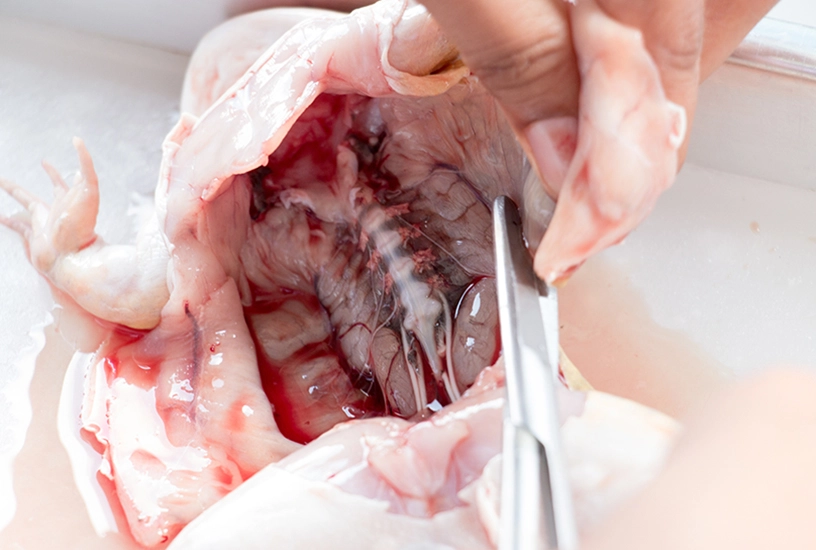
Frog dissection can be a valuable tool for teaching anatomy and physiology to high school students, as it provides a comprehensive examination of the internal organs and systems of the frog.
Dissection can be a valuable and engaging experiment for high school students interested in biology and life science.
Learn more: Frog Dissection
15. Witness the Carbon Cycle in Action
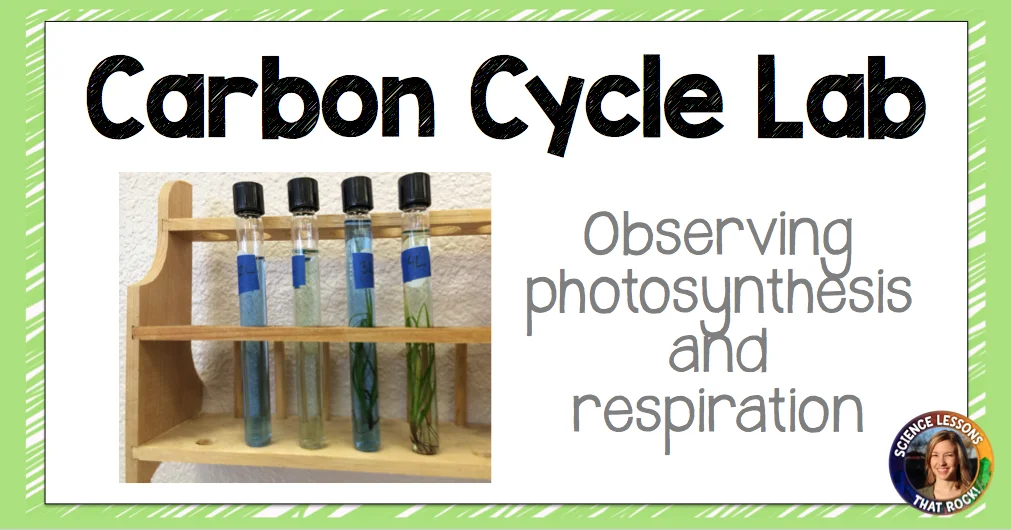
By witnessing the carbon cycle in action, learners can gain a better understanding of the interconnectedness of different parts of the Earth’s system and the impact that human activities can have on these processes.
Learn more: Carbon Cycle Lab
16. Investigate the Efficacy of Types of Fertilizer
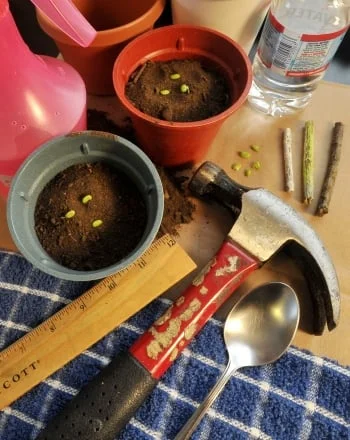
Investigating the efficacy of different types of fertilizer can be an interesting and informative way to learn about plant growth and nutrition. Investigating the efficacy of different types of fertilizer is a practical and engaging way to learn about plant nutrition and the role of fertilizers in agriculture.
Learn more: Best Fertilizer
17. Explore the Impact of Genetic Modification on Seeds
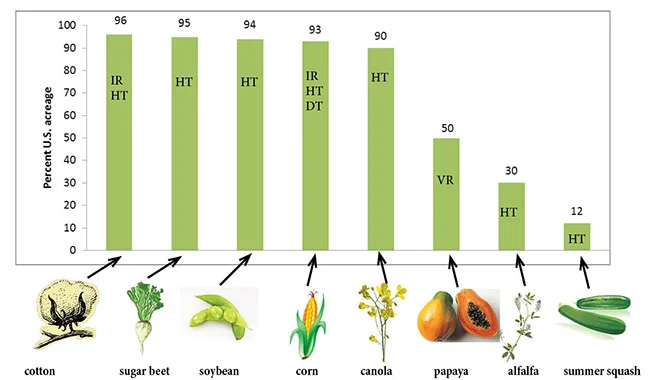
Exploring the impact of genetic modification on seeds is a fascinating and relevant topic that can spark meaningful discussions and encourage learners to think critically about the role of science and technology in society.
Learn more: Genetically Modified (GM) Crops
18. Yeast Experiment
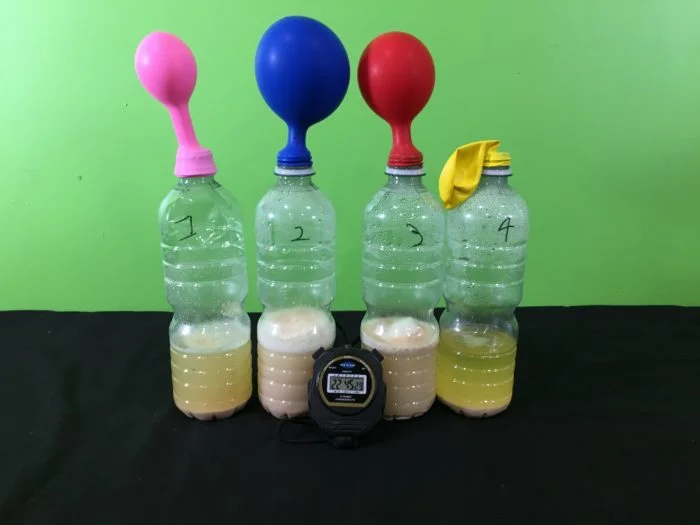
Another easy to perform experiment for high school students is the yeast. This experiment is simple since all that is required is the removal of four different food samples onto separate plates and a thorough examination of the mold that develops on each sample over time.
Learn more: Grow Yeast Experiment
19. Taste Perception
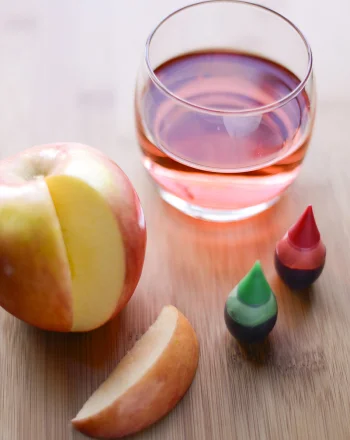
The human tongue has specialized taste receptors that respond to five primary tastes: sweet, salty, sour, bitter, and umami (savory). Taste perception plays an important role in determining food preferences and dietary habits, as well as influencing the overall eating experience.
Learn more: Taste perception
20. Pea Plant Genetics
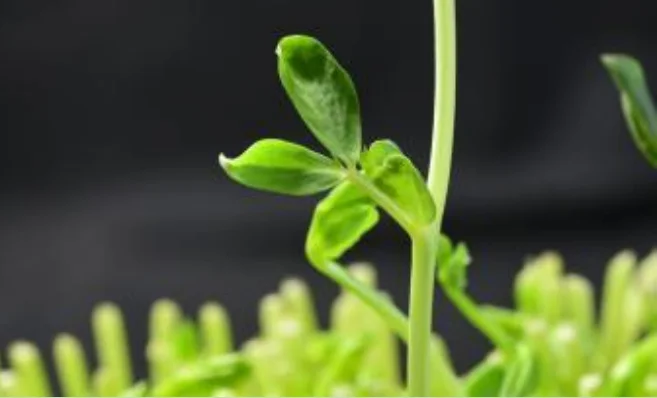
A classic pea plant genetics experiment involves cross breeding pea plants with different traits, such as flower color, seed shape, or pod shape.
This experiment can be conducted in a controlled environment, such as a greenhouse, by manually transferring pollen from one plant to another.
Learn more: Gregor Mendel Pea Experiment
21. Comparing Animal and Plant Cells
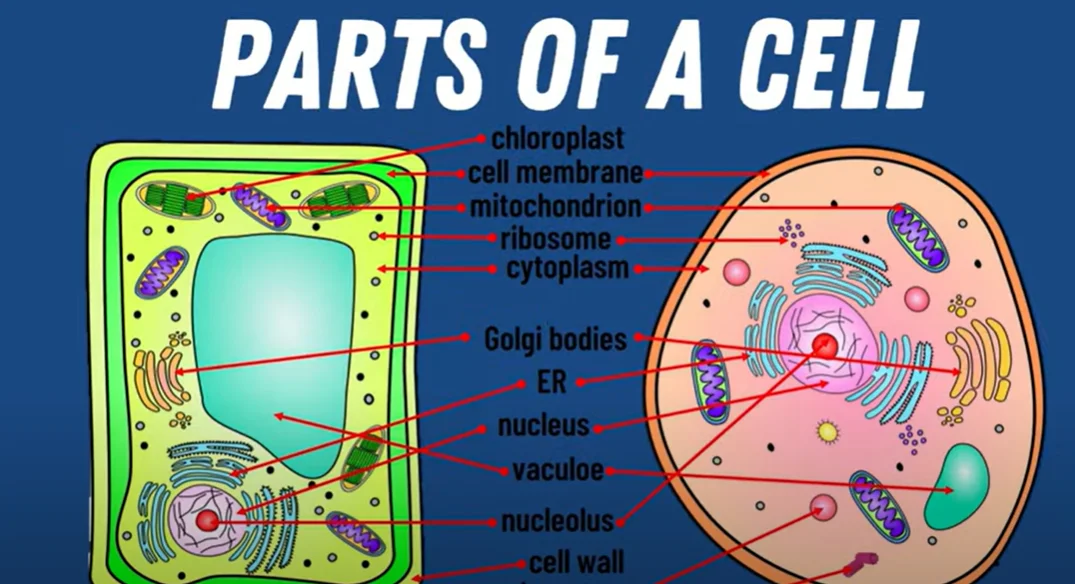
Comparing animal and plant cells is an important exercise in biology education. Both animal and plant cells are eukaryotic cells, meaning they contain a nucleus and other membrane-bound organelles.
This exercise can help students understand the structure and function of cells, as well as appreciate the diversity of life on Earth.
Learn more: Comparing Plant Cell and Animal Cell
22. Testing Bacteria
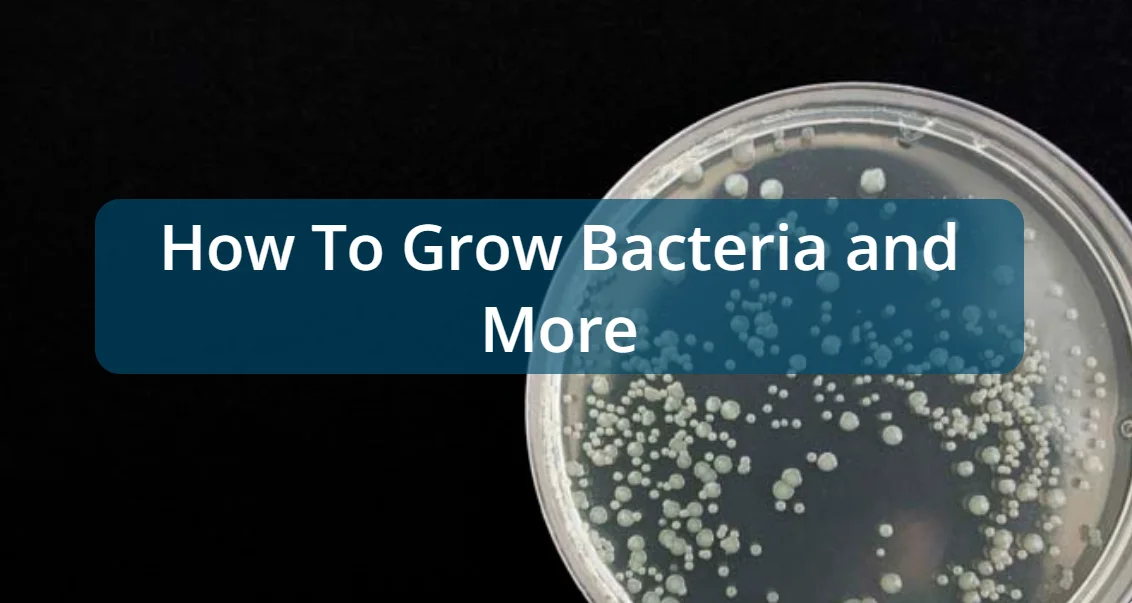
Bacteria are easily accessible and can be grown in a laboratory or even at home with simple equipment and materials. This makes it a practical and cost-effective experiment for schools with limited resources.
Learn more: How to grow Bacteria and more
23. The Effect of Light on Growth
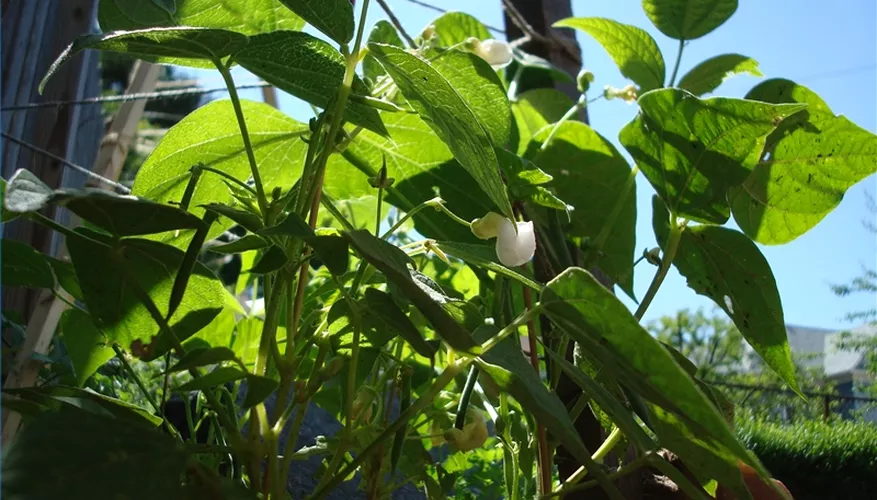
Light is a fundamental environmental factor that plays a crucial role in the growth and development of plants. By conducting this experiment, students can gain a deeper understanding of how light affects plant growth and why it is important.
Learn more: The effect of light in Plant Growth
24. Planaria Regeneration
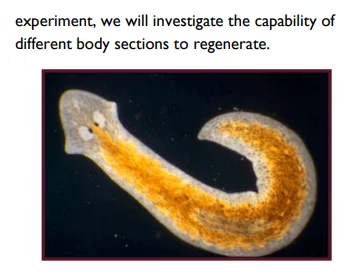
Planaria regeneration allows students to design their own experiments, as they can choose which body parts to remove and study the effects of different variables, such as temperature, pH, or chemical treatments on the regeneration process.
Planaria are easy to obtain and maintain in a laboratory or classroom setting. They are also affordable, making it an ideal experiment for schools with limited resources.
Learn more: Planaria Experiment
25. Making a Seed Board
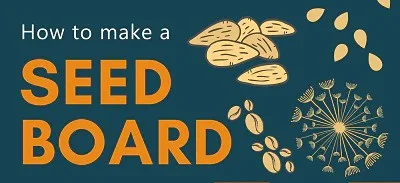
Making a seed board can be a fun and engaging activity for students, as they can see the progress of their plants over time and share their results with others. It can also foster a sense of responsibility and ownership in caring for their plants.
26. Design an Owl Pellet

Dissecting an owl pellet provides a hands-on learning experience for students, allowing them to practice skills in scientific observation, data collection, and analysis. Students can also learn about the anatomy of the prey species found in the owl pellet.
27. Grow an Herbal Cutting
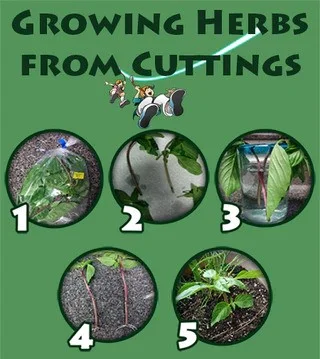
Growing an herb cutting provides a hands-on learning experience for students, allowing them to practice skills in plant care, experimental design, and data collection. Students can learn about the different stages of plant growth and the factors that affect it.
28. Eat a Cell Model

Creating an edible cell model connects to various disciplines, such as biology, anatomy, and nutrition. Students can learn about the different organelles that make up a cell and their functions, as well as the nutritional value of the food materials used in the model
29. Make a Habitat Diorama

Making a habitat diorama provides a hands-on learning experience for students, allowing them to practice skills in research, creative design, and presentation. Students can learn about different ecosystems and the organisms that inhabit them.
30. Create a Fall Leaf (or Signs of Spring) Journal

Creating a fall leaf (or signs of spring) journal provides a hands-on learning experience for students, allowing them to practice skills in observation, data collection, and analysis. Students can learn about the changes that occur in nature during the fall or spring season.
Similar Posts:
- 68 Best Chemistry Experiments: Learn About Chemical Reactions
- Top 100 Fine Motor Skills Activities for Toddlers and Preschoolers
- Top 58 Creative Art Activities for Kids and Preschoolers
Leave a Comment Cancel reply
Save my name and email in this browser for the next time I comment.
10 Biology Project Ideas
The field of biology offers a vast array of project ideas that allow students to explore various aspects of living organisms and their environments. These projects provide opportunities to investigate and better understand the intricate mechanisms, processes, and interrelationships within the biological world. By engaging in biology projects, students can develop essential scientific skills such as observation, experimentation, data analysis, and critical thinking. Whether it involves studying the effects of environmental factors on plant growth, exploring genetic inheritance patterns, investigating microbial interactions, or analyzing the impact of pollutants on ecosystems, biology projects offer a hands-on and stimulating approach to learning about the living world. These projects not only foster a deeper understanding of biological concepts but also encourage students to ask questions, make hypotheses, and explore potential solutions to real-world challenges. Overall, biology projects provide a platform for students to cultivate their scientific curiosity and contribute to our understanding of the natural world. Let’s discuss some of these projects in detail.
1. Effects of Temperature on Seed Germination
The objective of this project is to investigate the relationship between temperature and seed germination rates.
Materials Required
- Seeds of the same plant species
- Petri dishes or seed trays
- Filter paper or sterile cotton pads
- Thermometer
- Incubator or controlled environment chambers
- Stopwatch or timer
Preparation
- Select the plant species you want to study and gather the seeds.
- Sterilize the petri dishes or seed trays to create a sterile environment for the seeds.
- Cut filter paper or sterile cotton pads to fit the petri dishes or seed trays.
- Moisten the filter paper or sterile cotton pads with water and place them in the petri dishes or seed trays.
- Divide the seeds into groups, labeling each group according to the temperature conditions it will be exposed to.
Germination setup
- Place a specified number of seeds on the moist filter paper or sterile cotton pads in each petri dish or seed tray. Keep track of the number of seeds in each group.
- Close the petri dishes or cover the seed trays to create a sealed environment that retains moisture.
- Place the petri dishes or seed trays in an incubator or controlled environment chambers set at different temperature conditions, such as 15°C, 20°C, 25°C, 30°C, and 35°C.
- Ensure that the temperature remains constant throughout the experiment by monitoring it regularly with a thermometer.
Germination monitoring
- Start the stopwatch or timer as soon as the seeds are placed in the temperature-controlled environments.
- Check the petri dishes or seed trays daily, observing and recording the number of germinated seeds in each group.
- Remove any germinated seeds from the petri dishes or seed trays to prevent interference with subsequent observations.
- Continue monitoring the seeds until no further germination occurs in any of the groups for a certain predetermined period, such as one week.
Data collection and analysis
- Record the number of germinated seeds for each temperature condition at regular intervals.
- Calculate the germination percentage for each group by dividing the number of germinated seeds by the total number of seeds in the group and multiplying by 100.
- Analyze the data to identify any trends or patterns in seed germination as influenced by temperature.
Based on the observed data and analysis, draw conclusions about the effects of temperature on seed germination. Discuss any significant differences or trends observed between the temperature conditions and their impact on seed germination.
2. Antibacterial Properties of Natural Substances
The objective of this project is to examine the antibacterial effects of various natural substances.
- Natural substances to be tested (e.g., garlic, honey, lemon juice, tea tree oil, etc.)
- Nutrient agar plates
- Sterile swabs
- Petri dishes
- Sterile forceps or tweezers
- Bacterial cultures (e.g., Escherichia coli, Staphylococcus aureus)
- Distilled water
- Sterilize the petri dishes to create a sterile environment for bacterial growth. Ensure the agar plates are properly sealed.
- Obtain the natural substances to be tested. If necessary, prepare different concentrations or dilutions of the substances.
- Label the petri dishes and nutrient agar plates accordingly to identify the different substances and concentrations being tested.
- Prepare bacterial cultures of Escherichia coli and Staphylococcus aureus using sterile techniques or obtain pre-prepared cultures.
Inoculation
- Using sterile forceps or tweezers, streak the bacterial cultures (E. coli and S. aureus) onto separate nutrient agar plates in a standardized pattern (e.g., streaking for isolated colonies).
- Allow the agar plates to dry for a few minutes to ensure the bacterial cultures adhere to the surface.
Application of natural substances
- Apply a small amount of each natural substance to be tested onto a sterile swab or directly onto the surface of the bacterial cultures.
- Gently streak the swab or spread the substance evenly across the surface of the agar in the designated petri dishes.
- Repeat the process for each natural substance and concentration being tested, ensuring proper labeling of each plate.
- Close the petri dishes and place them in an incubator set at an appropriate temperature for bacterial growth (e.g., 37°C for most common bacterial cultures).
- Allow the plates to incubate undisturbed for a specified period, usually 24-48 hours, to allow for bacterial growth and observation.
Observation and data collection
- After the incubation period, remove the plates from the incubator and carefully observe the growth patterns on each plate.
- Record and document the presence or absence of bacterial colonies, their size, and any zones of inhibition around the areas where natural substances were applied.
- Take clear photographs or sketches of the plates for future reference and documentation.
Data analysis
- Compare the growth patterns and zones of inhibition on the agar plates with the different natural substances.
- Analyze and interpret the data to determine the antibacterial effectiveness of each tested substance.
Based on the observations and data analysis, draw conclusions regarding the antibacterial properties of the natural substances tested. Discuss any potential correlations or differences in antibacterial effectiveness against the tested bacterial cultures. Additionally, consider the implications and potential applications of these natural substances as alternatives to conventional antibiotics.
3. The Impact of pH on Enzyme Activity
The objective of this project is to investigate how changes in pH affect enzyme activity.
- Enzyme solution (e.g., amylase, catalase)
- Substrate solution (specific to the enzyme used)
- Buffer solutions of varying pH (e.g., pH 3, 5, 7, 9, and 11)
- Test tubes or small cuvettes
- Spectrophotometer or colorimeter (if applicable)
- Pipettes or droppers
- Prepare the buffer solutions of varying pH using appropriate buffers or acid/base solutions. Label each solution accordingly.
- Prepare the enzyme solution according to the manufacturer’s instructions or use pre-prepared enzyme solutions.
- Prepare the substrate solution according to the specific requirements of the enzyme being used.
Setting up the experiment
- Label a series of test tubes or small cuvettes with the corresponding pH values (e.g., pH 3, pH 5, pH 7, pH 9, pH 11).
- Place the same volume of the enzyme solution into each labeled test tube or cuvette.
Investigating the effect of pH on amylase activity
pH adjustment
- Using a pipette or dropper, add the respective buffer solution of pH 3, 5, 7, 9, or 11 to each test tube or cuvette containing the enzyme-substrate mixture.
- Ensure that the final pH in each test tube or cuvette corresponds to the intended pH value.
Incubation and reaction time
- Start the stopwatch or timer as soon as the buffer solution is added to the enzyme-substrate mixture.
- Allow the reaction to proceed for a specified duration (e.g., 1 minute, 5 minutes, etc.). Ensure consistency in the reaction time for all samples.
Stopping the reaction
- Add a stopping solution (e.g., acid or base) or use other appropriate methods to terminate the enzyme-substrate reaction in all test tubes or cuvettes simultaneously.
- Make sure the stopping solution used does not interfere with subsequent analysis, if applicable.
Measurement of enzyme activity
- If the enzyme reaction produces a measurable product (e.g., a color change), use a spectrophotometer or colorimeter to measure the absorbance or intensity of the product.
- Follow the instrument’s instructions to record the measurements for each sample. If no instrument is available, visual observation of changes in color or other visible indicators can be used.
Data analysis and interpretation
- Analyze the recorded data, considering factors such as the rate of reaction or the amount of product formed.
- Compare the enzyme activity at different pH levels and identify any patterns or trends.
Based on the data and analysis, draw conclusions regarding the impact of pH on enzyme activity. Discuss any optimal pH ranges for enzyme activity and any observed deviations from the optimum. Consider the underlying mechanisms and factors that contribute to the pH-dependent activity of enzymes.
4. The Effect of Light on Plant Growth
The objective of this project is to study the influence of different light conditions on plant growth.
- Plant seeds of the same species (e.g., bean seeds)
- Planting pots or containers
- Potting soil
- Light sources (e.g., natural sunlight, fluorescent lights, LED lights)
- Timer or clock
- Ruler or measuring tape
- Notebook or data recording sheet
- Fill the planting pots or containers with potting soil, leaving enough space for seedling growth.
- Plant the seeds in the pots according to the recommended depth and spacing for the chosen plant species.
- Water the pots thoroughly, ensuring the soil is evenly moist but not waterlogged.
- Label each pot to identify the light conditions it will be exposed to.
Light exposure setup
- Choose different light sources to represent different light conditions, such as natural sunlight, fluorescent lights, or LED lights.
- Position the pots in different areas to represent the light treatments. For example, place some pots near a window for natural sunlight and others under artificial light sources.
Light exposure schedule
- Determine the light exposure schedule based on the plant species’ light requirements or preferences. For example, provide 12-16 hours of light per day for most common plants.
- Set up a regular schedule, ensuring the same duration and intensity of light exposure for all pots.
- Record the light exposure schedule in your notebook or data recording sheet.
Maintenance
- Water the pots regularly, maintaining the soil moisture level appropriate for the chosen plant species.
- Ensure that all pots receive equal care and attention regarding watering, temperature, and other environmental factors.
Growth observation and measurement
- Observe and record the growth of the plants at regular intervals (e.g., once a week).
- Measure the plant height using a ruler or measuring tape, starting from the soil surface to the highest point of the plant.
- Record any additional growth-related observations, such as leaf development, root growth, or the appearance of flowers or fruits.
- Compile the recorded plant growth data, including height measurements and any additional observations.
- Compare and analyze the growth patterns and differences among the different light treatments.
Based on the data and analysis, draw conclusions regarding the effect of light on plant growth. Discuss any observed variations in growth patterns and overall plant health due to the different light conditions. Consider the implications of light availability on photosynthesis, chlorophyll production, and plant metabolism.
5. Biodiversity in Local Ecosystems
The objective of this experiment is to assess and compare the biodiversity of different local ecosystems.
- Field notebook
- Camera or smartphone for documentation
- Field guides or online resources for species identification
- Measuring tape or ruler
- Magnifying glass or hand lens
- Sample collection tools (e.g., nets, traps, containers)
- GPS device or smartphone with GPS capabilities (optional)
- Weather-appropriate clothing and footwear
- Safety equipment (e.g., gloves, goggles)
Selection of Study Sites
- Identify and select multiple local ecosystems that you want to study, such as a forest, grassland, wetland, or urban park. Ensure they are easily accessible and safe for fieldwork.
- Obtain necessary permissions or permits if required for conducting research in the selected areas.
Preparatory Work
- Research and gather background information about the ecosystems you have chosen, including their typical biodiversity, key species, and any ongoing conservation efforts.
- Familiarize yourself with common identification features and characteristics of local flora and fauna.
Site Survey
- Visit each selected ecosystem and establish a defined study area within it.
- Record the location and relevant environmental factors such as temperature, humidity, and sunlight availability.
- Create a sketch or map of the study area, noting landmarks and any distinctive features.
Sampling Methods
- Choose appropriate sampling methods depending on the ecosystem and the organisms of interest. Examples include:
Visual observation
Record species sightings and their abundance in a given time frame.
Transect survey
Walk along a designated path, recording all species encountered within a specified distance on either side.
Quadrat sampling
Establish a square or rectangular frame at various locations and record all species within it.
Capture and release
Use nets, traps, or containers to collect samples for identification and later release unharmed.
- Randomize the sampling locations within the study area to ensure representative data collection.
- Note the date and time of each sampling event.
Data Collection
- Document each species encountered, including plants, insects, birds, mammals, and any other relevant taxa.
- Take clear photographs or make sketches of organisms for later identification.
- Record relevant details for each species, such as size, coloration, behavior, and habitat preferences.
- Measure abiotic factors like soil pH, temperature, or water quality, if relevant to your study.
Species Identification
- Use field guides, online resources, or expert assistance to identify the collected species.
- Note down the scientific and common names of identified species.
- Keep a record of any new or rare species encountered.
Data Analysis
- Organize your data by ecosystem type and sampling location.
- Calculate species richness (the total number of different species) and species diversity (taking into account the abundance of each species) for each ecosystem.
- Compare the biodiversity metrics among different ecosystems and draw conclusions based on the results.
Summarize your findings, highlighting any patterns or variations observed in biodiversity across the studied ecosystems. Discuss the significance of your results and potential implications for conservation efforts.
Reporting and Presentation
Prepare a report or presentation of your experiment, including the methodology, data collected, analysis, and conclusions. Use visual aids like graphs, charts, or photographs to support your findings.
Reflection and Future Directions
Evaluate the strengths and limitations of your study and suggest improvements for future investigations. Discuss potential research questions that arise from your findings and areas that require further exploration.
6. Investigating Factors Affecting Photosynthesis
The objective of this project is to analyze the impact of variables such as light intensity, temperature, and carbon dioxide levels on photosynthesis.
- Potted plants (of the same species)
- Light source (lamp or sunlight)
- Sodium bicarbonate (baking soda)
- Graduated cylinder
- Plastic wrap
- Paper clips
Plant preparation
- Select healthy potted plants of the same species for the experiment. Ensure that the plants have been exposed to similar environmental conditions before the experiment.
- Label each plant with a unique identifier or number.
Variable selection
- Identify the variables that will be tested in the experiment. Examples of variables that can be investigated include light intensity, carbon dioxide concentration, and temperature. Choose one variable to test at a time while keeping other factors constant.
Control setup
- Set up a control group by placing one potted plant in a well-lit area with normal atmospheric conditions.
Light intensity experiment
- Set up several additional potted plants in a similar environment as the control group.
- Measure the light intensity at each distance using a light meter or follow the manufacturer’s instructions for the light source.
- Start the timer and record the time.
- Leave the plants exposed to the different light intensities for a fixed duration (e.g., 30 minutes).
- After the specified duration, stop the timer and record the time.
- Measure the temperature and record it for each plant.
Carbon dioxide concentration experiment
- Prepare a sodium bicarbonate solution by dissolving a known amount (e.g., 1g) of sodium bicarbonate in a graduated cylinder filled with water.
- Place the potted plants under a plastic wrap tent.
- Leave the plants exposed to the increased carbon dioxide concentration for a fixed duration (e.g., 30 minutes).
Temperature experiment
- Adjust the temperature around each plant using heating pads or cooling fans to create different temperature conditions.
- Leave the plants exposed to different temperature conditions for a fixed duration (e.g., 30 minutes).
- Organize the data collected from each experiment, including light intensity, carbon dioxide concentration, temperature, and the corresponding rate of photosynthesis.
- Analyze the data to identify any trends or patterns.
- Draw conclusions based on the experimental results and discuss how each variable affects the rate of photosynthesis.
7. Cell Membrane Permeability
The objective of this project is to examine the permeability of different substances through a cell membrane.
- Dye (or small molecule)
- Cell membrane (for example a lipid bilayer)
- Pot (container)
Experimental Setup
- Prepare a solution of interest that contains a substance you want to test for membrane permeability. For example, you can use a dye or a small molecule.
Control Group
- Prepare a control group by adding the substance of interest to a solution that does not contain any cells or membranes. This will help establish a baseline for the substance’s behavior in the absence of a cell membrane.
Experimental Group
- Take a sample of cells or create an artificial membrane model in a suitable container.
- Add the substance of interest to the container, ensuring that it comes into contact with the cell membrane or artificial membrane model.
- Allow the substance to interact with the membrane for a specific period, depending on the experimental requirements.
Quantification of Permeability
- After the desired incubation time, collect a sample from the container to measure the amount of substance that has passed through the cell membrane or artificial membrane model.
- If using cells, carefully remove them from the solution using techniques such as centrifugation or filtration. If using an artificial membrane, collect the solution on the other side of the membrane.
- Measure the concentration or quantity of the substance in the collected sample. This can be done using various analytical techniques, such as spectroscopy, chromatography, or enzyme assays.
- Compare the concentration or quantity of the substance in the control group with that in the experimental group.
- Calculate the permeability of the cell membrane or artificial membrane model by determining the rate or extent of substance passage through the membrane. This can be done by comparing the amount of substance in the control and experimental samples.
Repeat and Validate
- To ensure the reliability and reproducibility of your results, repeat the experiment multiple times with both the control and experimental groups.
- Validate your findings by comparing them with existing literature or previous studies on cell membrane permeability.
8. The Relationship Between Soil Type and Plant Growth
The experiment aims to investigate the influence of different soil types on plant growth. Understanding how soil composition affects plant growth is crucial for optimizing agricultural practices and ensuring successful crop production. By examining the relationship between soil type and plant growth, we can gain valuable insights into the suitability of different soils for various plants.
- Various soil types (e.g., sandy soil, loamy soil, clay soil)
- Plant seeds of the same species (e.g., tomato, lettuce, or bean)
- Measuring tools (ruler or tape measure)
- Watering can or spray bottle
- Natural light source
- Camera or smartphone for visual documentation
Soil Preparation
- Gather soil samples of different types (sandy, loamy, clay) from various locations or purchase them from a reliable source.
- Ensure that the soil samples are free from contaminants or foreign matter.
- Label each container or pot with the corresponding soil type.
Plant Selection
- Choose a plant species that is commonly grown and suitable for experimentation, such as tomatoes, lettuce, or beans.
- Ensure the seeds are of the same variety to minimize genetic variability.
- Fill each pot or container with a specific soil type, leaving enough room for the plant’s root system to grow.
- Plant the seeds according to the recommended depth and spacing for the selected plant species.
- Maintain consistency in planting depth, seed placement, and watering across all soil types.
Environmental Conditions
- Place all pots or containers in an area with access to natural light or under controlled grow lights.
- Ensure that the temperature, humidity, and light conditions remain consistent throughout the experiment.
Watering and Maintenance
- Water the plants regularly, maintaining a consistent watering schedule for all soil types. Avoid overwatering or underwatering.
- Record the amount of water used for each watering session.
- Monitor the plants for signs of pests or diseases and take necessary measures to ensure plant health.
- Rotate the position of the pots periodically to prevent any positional bias.
- Measure and record the plant growth parameters, such as height, leaf count, and number of branches, at regular intervals (e.g., weekly).
- Take photographs or make sketches to document the visual differences in plant growth between the soil types.
- Note any observations or anomalies during the experiment.
- Compile the recorded data for each soil type and plant growth parameter.
- Calculate the average growth rate and compare the results between soil types.
- Use statistical analysis methods, such as t-tests or ANOVA, to determine if there are significant differences in plant growth among the soil types.
- Analyze the data and draw conclusions based on the observed differences in plant growth among the soil types.
- Discuss any limitations or factors that may have influenced the results.
- Provide recommendations for future studies or practical applications.
9. Investigating Genetic Inheritance
The objective of this project is to investigate the patterns of genetic inheritance by analyzing the traits passed down from parent organisms to their offspring.
- Organisms with known genetic traits (e.g., fruit flies, plants, or other organisms suitable for genetic studies)
- Controlled breeding setup (cages, pots, or other suitable containers)
- Genetic markers or phenotypic indicators for the traits under investigation (e.g., eye color, flower color, or other observable characteristics)
- Lab equipment (microscopes, petri dishes, pipettes, etc.)
- Punnett squares or other genetic analysis tools
Selection of Parent Organisms
- Choose parent organisms that exhibit distinct and easily observable genetic traits. These traits should have clear phenotypic differences.
- Ensure that the parent organisms are healthy and free from any known genetic disorders or mutations.
Controlled Breeding Setup
- Set up separate breeding containers for each pair of parent organisms.
- Maintain controlled environmental conditions such as temperature, light, and humidity to minimize external factors that could influence the traits being studied.
Breeding Process
- Introduce the selected parent organisms into their respective breeding containers.
- Allow the parent organisms to mate and produce offspring naturally.
- Record the mating pairs and the number of offspring produced.
Observation and Data Collection
- Carefully observe the offspring for the specific genetic traits under investigation. Record any observable differences or similarities.
- Use appropriate phenotypic indicators or genetic markers to identify the expression of traits.
- Keep accurate records of the traits exhibited by each offspring.
Analysis and Interpretation
- Analyze the observed data to identify patterns of inheritance.
- Use Punnett squares or other genetic analysis tools to predict the expected phenotypic ratios based on the known genotypes of the parent organisms.
- Compare the observed ratios with the predicted ratios to determine if the inheritance follows expected Mendelian patterns.
Replication and Statistical Analysis
- Repeat the breeding process and observation with multiple pairs of parent organisms to ensure the reliability of the results.
- Perform statistical analysis, such as chi-square tests or other appropriate tests, to determine the significance of any deviations from expected ratios.
- Based on the data and analysis, draw conclusions about the patterns of genetic inheritance observed.
- Discuss any deviations from expected ratios and propose possible explanations.
- Summarize the findings and their implications in the context of genetic inheritance.
Further Exploration
- If necessary, conduct additional experiments to investigate specific aspects of genetic inheritance or to explore more complex inheritance patterns.
- Explore other factors that may influence inheritance, such as environmental factors or the presence of multiple genes affecting a trait.
10. The Effect of Fertilizers on Plant Growth
The objective of this project is to investigate the impact of different fertilizers on the growth of plants.
- Several identical plant specimens of the same species
- Different types of fertilizers (organic and synthetic)
- Measuring instruments (ruler, measuring cups, etc.)
- Planting containers or pots
Selection of Plant Specimens
- Choose plant specimens of the same species and similar size to ensure consistency.
- Ensure that the plants are healthy and free from any existing nutrient deficiencies.
Preparation of Planting Containers
- Fill the planting containers or pots with the same amount of potting soil.
- Label the containers to distinguish between the different fertilizer treatments.
Application of Fertilizers
- Follow the manufacturer’s instructions for each type of fertilizer.
- Apply the specified amount of each fertilizer to the respective planting containers.
- Leave one container as the control group with no fertilizer applied.
Planting the Specimens
- Plant one specimen in each container at the same depth.
- Make sure the plants are positioned centrally and receive equal exposure to light.
- Water the plants regularly to maintain consistent moisture levels.
- Ensure that all plants receive the same amount of water throughout the experiment.
- Keep track of watering and maintenance activities.
Monitoring and Data Collection
- Observe and measure the growth of the plants at regular intervals (e.g., weekly).
- Record data such as plant height, number of leaves, or any other relevant growth indicators.
- Take photographs or make sketches to visually document the growth progress.
Analysis and Comparison
- Compare the growth of plants in different fertilizer treatments with the control group.
- Analyze the data collected and look for patterns or significant differences.
- Draw conclusions based on the analyzed data.
- Determine if any fertilizer treatments resulted in significant differences in plant growth compared to the control group.
- Discuss the effectiveness of different fertilizers and their impact on plant growth.
- If necessary, conduct additional experiments to explore the effects of different concentrations or combinations of fertilizers.
- Investigate the long-term effects of fertilizers on plant growth or the impact on specific plant species.
- Explore the influence of other factors, such as environmental conditions or soil composition, on the efficacy of fertilizers.
Related Posts
Bamboo Drip Irrigation System
Penicillium Characteristics & Uses
14 Cellular Respiration Examples
12 Biogenesis Examples
17 Action Potential Examples
Adventitious Root System: Types, Modifications and Examples
Add comment cancel reply.

10 Awesome Biology Experiments Ideas For High School Aspirants
Science is no fun without practical experiments. Unlike middle school, where you limit your study and inquiry of science to the theoretical realm, high school has a different scene. Experiments are a major part of studying science in high school, and biology all the more so. Biology is fascinating. It makes us wonder at the complex system which makes the human body function efficiently; it has all the answers to the questions of death, sickness, and life. But we must admit that only the theoretical explanation of these complex concepts never suffices to give us a satisfactory understanding. That is where practical experiments come to the rescue.
Therefore, this post will cover 10 fascinating biology experiments that high school students can do independently, even at home.
Cool Experiments To Do In Your Bio Lab
While many are intrigued by art competitions , others are moved toward robotic classes. However, in a bunch of students, there are a few who love biology experiments. Hence, here are a few experiments that can be tried out by high schoolers if biology is the subject that piques their interest:
1. Extract DNA
Everyone knows DNA is the agent behind our hereditary traits. Residing in the cell’s nucleus, it guides major aspects of our physiognomy. Usually, the DNA is not visible to the naked eye, you need a powerful microscope to view it, but with this experiment, you can have a fine look at the DNA with this DNA extracting experiment.
Basically, you will be forcefully breaking down some cell walls of the extracted cells by dipping it into your extraction solution. Adding 35ml of dish soap and 5gm of salt in 240 ml of water will give you the extraction solution. Dip and mix some mashed banana slices into the extract, leading the DNA to head out into the solution. Then we will use some alcohol to force the DNA to join up into large chains that we can actually see. You will get a fluffy white substance, the DNA that is visible to the naked eye, made possible by this extraction experiment.

2. Dissect A Flower
Everyone has theoretically seen and known the different parts of a flower. Some exceptional students might even have that picture inscribed in their memory. Very well if you have that, but the hands-on experience of viewing those parts with your own eyes can definitely beat any other theoretical picture-viewing experience.
So, first thing first, go out and choose a bloom. Observe the flower and point out the petals, stamen, and pistil. Use a razor to remove the stamen and observe the Filament and Anther under magnifying glasses. Wipe out some pollen grains and have a detailed look at it under the microscope while you are at them. Next up, remove the pistil and observe your flower’s ovary, stigma, and style with a magnifying glass. This is the simplest yet a fascinating experiment on the list.
3. Raise A Butterfly
Again, we have the theoretical knowledge of the life cycle of a butterfly. Yet it takes us by surprise and wonder when we see the process through our own eyes. So, get ready to be fascinated by a butterfly’s journey from an ugly worm to a colourful butterfly.
The process is easy. You get a caterpillar, observe it daily, and note the changes. The changes will be as precise as your books have always told you. First off, a butterfly lays an egg and a caterpillar hatches from the egg. The caterpillar eats and grows, shedding its skin several times to accommodate its growing belly. Once the caterpillar reaches the right size, it sheds its skin for the last time, revealing the chrysalis, which quickly hardens. Inside the chrysalis, the caterpillar goes through metamorphosis and changes into a butterfly. At the right time, the butterfly breaks out. It hangs onto the chrysalis for a bit, just until its wings dry out and harden. Then, it flies off in search of nectar.
So, in the end, you will be sitting back and enjoying the release of the butterfly you raised with your own very hands.
4. Frog Dissection
Dissecting a frog is one of those lab activities that fascinate and chill you simultaneously. But before you start with the dissection, make sure you take note of all the outer organs like the skin, legs, head, digits, and urinary outlet (cloaca) of the specimen.
You will need a good scalpel, pins, and a dissection tray to cut the frog. After these things are in place, you are all set to perform the three significant incisions on the specimen. Start by cutting from the jaw to down between the legs, then make two horizontal incisions, one above the neck and the other towards the bottom of its legs. At this point, you will start seeing some organs residing in the abdominal cavity. Repeat the same incision on the frog’s abdomen to open the abdominal cavity. Observe the heart, and identify the major organs like the liver, stomach, intestines, and oviducts.
This experiment will definitely leave you amazed at the complex system of nerves, muscles, and bloods that functions interdependently to sustain a living being. However, this experiment should be done in front of teachers and professors in the lab.
5. Diversity Among Plant Samples
Another simple biology experiment involves going into your natural environment, such as a local park, to observe diversity among plant samples. To make the experiment more detailed, students can rub collected samples on filter paper to observe which plants present which colors.
Teens can work to find out why certain plants present certain colors. They can also dissect the flowers of the plants and paste the dissected parts of the flowers in their observation notebooks to make a note of the differences between the flowers of the different species of plants.
6. Yeast Experiment
Another simple and easy experiment on the list for high schoolers is the yeaThis experiment is easy because it only involves taking out four different food samples on different plates and a long-time observation of the mold that grows on each sample.
Studying mold is an excellent way to learn more about ecology and biology. This experiment compares how fast mold grows on different types of foods kept in many American homes. Some of the foods are generally kept in refrigerators to extend shelf life, while others are commonly stored at room temperature. This experiment shows that certain foods grow mold faster than others, which is one reason why these foods are often kept in the refrigerator.
Going a step further, the students can also do research inspired by this experiment and find answers to questions such as: what makes a mold grow? And how does one prevent their growth?
7. Look at cell division under the microscope
Cheap digital microscopes with high magnification power that can be directly connected to your laptop or smartphone are easily available in the market nowadays. You can make use of such microscopes to observe every little thing you find at home or outdoors.
A great experiment to do at home with a microscope is to look at how cells divide in different organisms. One of the easiest is baker’s yeast. With a magnification of at least 400x, you can start discerning the shapes of individual yeast cells in water. You will notice that some of them have little buds on them, which is the way they grow and divide.
Taking it one step further, you can also take the tip of the onion’s root and observe them to study the different stages of mitosis as well.
8. Ferment your own food
Bacteria and yeast are practically geniuses in the art of fermentation. Humans have been taking their help for the longest time to make food items such as bread and alcohol. And it is quite easy to ferment your own food at home.
In most cases, you need a starter culture of the bacteria or fungi that make the food you will be fermenting. You can get it from someone already doing fermentation at home or buy it online. Many options range from kombucha, kefir, or mead to yogurt, cheese, kimchi, and sauerkraut. Each fermented food has different requirements, so ensure you have everything you need before starting. After you have everything in place, you are ready to experiment with this fermented food and its varied tastes.
9. Examining Fingerprints
The tips of each finger of your hand have a combination of lines and features in distinctive patterns that we call fingerprints. Fingerprints are one of the fascinating features of the human body. We have been told that each of us is unique in our light, and our fingerprints prove it to be so. You can analyze your own uniqueness by analyzing your very own fingerprints in this project. All you need is paper, magnifying glass, and stamp ink.
First, you need to press a finger against the ink pad and then against a piece of paper. Then, use the magnifying glass to examine the fingerprints and look for arches, whorls, and loops. You can record your finding on your paper. And then take a friend’s fingerprints to analyze the differences.
10. Create A Fall Leaf (Or Signs Of Spring) Journal
Biology is all about studying life and learning more about our natural surroundings. A Fall Leaf journal or a Signs of Spring journal will help your students learn about the trees and bushes that are in your area. This experiment is easy, needs minimal effort, and is fun and exciting as well.
Things To Remember
Science experiments are interesting by nature, but this aspect of their nature shouldn’t keep us from maintaining our share of vigilant caution. Science experiments could sometimes wreak havoc if we do not take enough caution while doing these experiments. Therefore, in order to prevent yourself from ruining your own experiments, you have to follow some safety instructions while doing these experiments.
Wear covered shoes and long pants while performing any experiment, and keep your hair up so it can’t fall into your experiment or a flame. Don’t carelessly sniff or taste any chemicals; don’t just experiment with everything you get your hands on. Make sure you have your full attention in the experiments, and handle everything with care, especially sharp objects like knives or objects that could produce a flame. And at the end of your experiment, you should also know how to dispose of the waste properly.
In the end of it, what matters the most is that we genuinely imbibe the lessons that we learn from our experiments. These biology experiments will get you further into the fascinating world of biology. If you want to further your knowledge, you may also visit science labs, perform science experiments in the lab, attend workshops and seminars, and meet people and learn from their experiences.
Keep learning, keep experimenting, and keep enjoying the process of learning.

Sananda Bhattacharya, Chief Editor of TheHighSchooler, is dedicated to enhancing operations and growth. With degrees in Literature and Asian Studies from Presidency University, Kolkata, she leverages her educational and innovative background to shape TheHighSchooler into a pivotal resource hub. Providing valuable insights, practical activities, and guidance on school life, graduation, scholarships, and more, Sananda’s leadership enriches the journey of high school students.
Explore a plethora of invaluable resources and insights tailored for high schoolers at TheHighSchooler, under the guidance of Sananda Bhattacharya’s expertise. You can follow her on Linkedin
Leave a Comment Cancel reply
Save my name, email, and website in this browser for the next time I comment.
Science Bob
- Experiments
- Science Fair Ideas
- Science Q&A
- Research Help
- Experiment Blog
Okay, this is the hardest part of the whole project…picking your topic. But here are some ideas to get you started. Even if you don’t like any, they may inspire you to come up with one of your own. Remember, check all project ideas with your teacher and parents, and don’t do any project that would hurt or scare people or animals. Good luck!
- Does music affect on animal behavior?
- Does the color of food or drinks affect whether or not we like them?
- Where are the most germs in your school? ( CLICK for more info. )
- Does music have an affect on plant growth?
- Which kind of food do dogs (or any animal) prefer best?
- Which paper towel brand is the strongest?
- What is the best way to keep an ice cube from melting?
- What level of salt works best to hatch brine shrimp?
- Can the food we eat affect our heart rate?
- How effective are child-proof containers and locks.
- Can background noise levels affect how well we concentrate?
- Does acid rain affect the growth of aquatic plants?
- What is the best way to keep cut flowers fresh the longest?
- Does the color of light used on plants affect how well they grow?
- What plant fertilizer works best?
- Does the color of a room affect human behavior?
- Do athletic students have better lung capacity?
- What brand of battery lasts the longest?
- Does the type of potting soil used in planting affect how fast the plant grows?
- What type of food allow mold to grow the fastest?
- Does having worms in soil help plants grow faster?
- Can plants grow in pots if they are sideways or upside down?
- Does the color of hair affect how much static electricity it can carry? (test with balloons)
- How much weight can the surface tension of water hold?
- Can some people really read someone else’s thoughts?
- Which soda decays fallen out teeth the most?
- What light brightness makes plants grow the best?
- Does the color of birdseed affect how much birds will eat it?
- Do natural or chemical fertilizers work best?
- Can mice learn? (you can pick any animal)
- Can people tell artificial smells from real ones?
- What brands of bubble gum produce the biggest bubbles?
- Does age affect human reaction times?
- What is the effect of salt on the boiling temperature of water?
- Does shoe design really affect an athlete’s jumping height?
- What type of grass seed grows the fastest?
- Can animals see in the dark better than humans?
Didn’t see one you like? Don’t worry…look over them again and see if they give you an idea for your own project that will work for you. Remember, find something that interests you, and have fun with it.
To download and print this list of ideas CLICK HERE .

- The scientific method
- science fair resources
- a little helpful advice
ADS (these ads support our free website)
Share this page.
20 Fun and Interesting Biology Experiments for High School
Jennifer is a prolific writer with over 10 years of experience in online writing. She enjoys creating quotes and poems.
Learn about our Editorial Policy .
Unlike science in middle school, high school biology is a hands-on endeavor. Experiments are a standard part of biology courses, whether they are part of a controlled laboratory class, science fair, or individual student projects. Explore a few fascinating high school biology experiments; and discover ideas for simple and easy biology experiments to incorporate into your curriculum.
Examples of Biology Experiments for High School
Whether you are looking for a science fair project or need to create a project for a class assignment, there are numerous biology projects for teens.
- 7 Senior Bio Examples to Help You Craft Your Own
- 20 Websites for Teenagers to Socialize, Play, and Study
- 70+ High School Journal Topics to Inspire You to Write
Frog Dissection
Dissecting a frog is a quintessential part of high school biology. If possible, try to get both female and male specimens for your class so students can see the eggs and compare the insides to the male frog.
Flower Dissection
High schoolers can get a bit squirmy about frog dissection. Have a flower dissection instead. The teens can find and label the female and male parts of the flower. It can be fun for high schoolers to check out flower intricacies under a microscope.
Diversity Among Plant Samples
Another simple biology experiment involves going into your natural environment, such as a local park, to observe diversity among plant samples. To make the experiment more detailed, students can rub collected samples on filter paper to observe which plants present which colors . Teens can work to find out why certain plants present certain colors.
Phototropism
It can be enlightening to show kids how phototropism affects plants. They can set up an experiment by using different materials to affect light. They can see how affecting the light affects the growth of the plant.
Water From Common Sources
Water is everywhere. Unfortunately, water contains numerous elements too. A great experiment is collecting water samples from various sources and viewing them under a microscope. Students can then compare their results and attempt to postulate why a given water source would present more organisms than another would.
Yeast Experiment
Another experiment involves taking a piece of bread to monitor the molds that grow over a period of two weeks.
Taste Perception
Everyone has their own taste. Literally! Some people like sour things while others like sweet. Find out if everyone perceives taste the same way and has the same threshold for taste by doing an in-class experiment.
Disinfectant Effectiveness
Ever wonder how effective hand sanitizer is at killing bacteria? Test it! Grow bacteria in a Petri dish along with paper soaked in peroxide, white vinegar, rubbing alcohol, etc. Find out how each one of them works to inhibit bacteria growth.
Pea Plant Genetics
Students can recreate Mendel's genetic pea plant experiments . By growing pea plants and comparing their phenotypes, students can determine each parent plant's genotype.
Examining Fingerprints
Fingerprints are pretty amazing features on the human body. Not only can you use them to open your phone, but each one is unique . Put your fingerprint on paper and examine the different aspects of the lines and arches on your fingers. Compare fingerprints among everyone in class.
Comparing Animal and Plant Cells
To better understand animal and plant cells, students can compare cells from their cheeks to cells from an onion. Just stain the cells with iodine or another dye to better see the cell structures under a microscope.
Creating a DNA model is a great way to help students understand the structure and function of DNA in genetics. Students can use candy, string, and toothpicks to develop a fairly realistic model of the double helix structure.
Water Bottle Germs
Many people refill their water bottles in high school. But do they add germs or bacteria to the bottle? Is refilling a disposable water bottle safe? Have students take swabs of the water bottles they use and look for bacteria around the lid or on the bottle.
Testing Hair
Teens use a lot of hair products. But do they truly work? Have teens in your class take a few samples of their hair. See what happens to the hair when common hair products are added.
Water Cycle
Understanding the water cycle isn't hard. But teens can look at it firsthand by creating a water cycle experiment. Just have them fill a baggie with water and tape it to a window. They will watch evaporation, condensation, and precipitation in action.
Closed Ecosystem Bottle
It can be hard for students to imagine something having its own ecosystem. However, you can use a plastic bottle to create a closed ecosystem.
Field Survey Biology Experiment
This experiment is great because it is cheap, easy, and you can do it in a variety of areas around your school or send students home with it. The goal is to observe the surrounding area over time and monitor the samples that you collect.
Materials You'll Need
For this experiment, you need to grab:
- Jar or baggies to collect samples
- Stakes and string or cones help mark an area
- Paper or journals for taking notes
- Slides, slide covers, and a microscope
Observation Instructions
Take note that you will observe your area for several months, so choose an area that is easy to re-mark or where you can leave the markings up, so you return to the same designated area each time.
- Have students choose one spot to observe. The spot should be no more than two to three feet square.
- Do you see evidence of animals? (Look for prints, scat or guano, fur, owl pellets, etc.)
- What plant life do you see? (Look for moss, lichen, weeds, and other plants).
- What fungus do you see? (Look for mushrooms and other fungal growth).
- What insects do you see? (Encourage students to look specifically for relationships here - such as connecting mosquitos with water or bees with flowers or a hive).
Sampling and Classroom Instructions
Bring the research back into the classroom by following these instructions.
- Guide students to make connections and note relationships in their marked area. Have them inventory the area and draw a crude map of where everything is.
- If possible, have students use tweezers and gently take samples of soil, fungus, moss, plant life, insects, etc.
- pH value of soil or water
- Microorganisms in water
- Plant cells under a microscope
- Comparative structure of flowers you find
- Require students to record everything in their own journal or interactive notebook.
Teacher tip: Set up stations in the classroom for viewing, dissecting, drawing, testing pH, etc. This will allow students some choice in how they proceed with examining their specimens.
Testing for Bacteria
Have students see where the most bacteria are lurking. This experiment is great if you want a lab that has guaranteed results. There is always some kind of bacteria lurking somewhere, just waiting to grow in a student's Petri dish.
These are the materials you are going to need to have on hand.
- Prepared Petri dishes, three per student
- Sterile swabs
- Painter's tape
- Scotch tape
- Permanent Marker
- Graph paper
Material notes : You can also purchase sterile Petri dishes and agar separately; however, it is much more likely students will contaminate the plate before they swab.
Preparing Your Petri Dishes
Prepping your Petri dishes is an essential part of the experiment.
- Before opening any materials, have students identify three places (but in one physical location such as at home or at school) that they are going to swab for bacteria. Encourage them to hypothesize about which place they think will grow the most bacteria.
- Using the Petri dish, trace three circles on the graph paper and cut it out.
- In pencil, draw a line to denote the 'top' of the circle. It doesn't matter where you draw the line, but you will need something to show you how your Petri dish is oriented so you can be sure you're tracking the same colony each time you observe.
- On the back of the graph paper circle, note the location where you will take the swab, as well as the date you are taking the swabs. Do this for all three Petri dishes you have.
Collecting Samples
Have students bring their unopened sterile swabs and closed Petri dishes to the site. Carefully, they should:
- Set the Petri dish down on a flat surface.
- Unwrap the swab.
- Swipe the swab across the area they suspect has bacteria.
- Lift the lid, gently wipe the used swab across the agar, and close the lid, carefully but quickly.
Hint: Sometimes, it's helpful to tape the Petri dish shut so that the Petri dish doesn't accidentally lose its lid.
Evaluating Results
Now that you've swabbed the areas, it's all about the results.
- Have students draw Petri-dish-sized circles in their lab books or on separate graph paper. Draw one week's worth of Petri dishes for each dish the student has.
- As the colonies start to grow, have students draw the size in their notebooks, making daily observations. If they cannot observe daily, have them observe on the same day(s) over a month.
- They should also be recording the color and other notable features of their bacteria colonies in their lab books.
- At the end, the students should write a conclusion of their study.
The Effect of Light on Growth
In this lab, students investigate how light affects plant growth. Students may use any plants, but cress will grow more quickly, so your students can get results faster.
Gather up your materials.
- Styrofoam cup or bowl
- Potting soil
Instructions
With your materials at the ready, it's time to start your experiment.
- On Day 1 - plant seeds in the soil in the cups.
- Label the cups according to the light you're going to use. You can compare sunlight vs. complete darkness, or you can compare several types of light.
- On each day after the initial day, take a picture of each cup and try to measure the growth, if any.
- For your lab entries, measure the sprouts, and note color and shape characteristics.
Planaria Regeneration
In this lab, students watch the rate at which planaria regenerates and test whether how you cut the planaria makes a difference as to how they grow back.
To conduct this experiment, you want to grab.
- 9 planarias
- 3 small plastic Petri dishes
- 1 large plastic Petri dish
- 1 plastic pipet
- 1 magnifying glass
- 1 plastic coverslip
- Spring water
- Paper towels
- Ice pack(optional)
Setup Instructions
Getting the setup right is half the battle when it comes to creating fun and interesting biology experiments for high schoolers.
- Start by numbering the three small Petri dishes to ensure nothing gets confused later.
- Using the pipet, move a planarian into the large Petri dish.
- At this point, you may want to try to set the Petri dish on an ice pack for a few minutes. This isn't totally necessary, but it will slow the planarian down to make it easier to cut.
- Right behind the head
- Right in the middle
- Right towards the tail
- Use the pipet to gently transfer each segment to a new Petri dish (with spring water).
- Repeat the steps with all remaining worm segments.
- Every day, observe the planaria. Regeneration will be considered 'complete' when the photoreceptors (the black dots that look like eyes on the planarian's head) appear.
Scientific Method and High School Biology Experiments
Much of high school biology is focused on instilling the elements of science in students. The scientific method is one of these main focuses. The method prompts participants in science to be investigators and to come up with a guess about what will happen in a given experiment, called a hypothesis. The point of the experiment is then to either prove the hypothesis correct through the experiment or prove it incorrect. This prompts teens to get involved in the scientific method while teaching other scientific skills, such as:
- The ability to make a rational estimate based on present factors and knowledge
- Close detail and monitoring skills
- The possibility of being wrong and how to move past that if it turns out to be the case
- Quick thinking skills
As much fun as biology experiments can be, there is an educational component spearheading the experiment.
Fun and Interesting High School Biology Experiments
For teens, high school biology can be fun. Finding the right experiment can help biology pop off the page and become more than just another required course of study. Who knows? Perhaps your student will even be prompted to enter a science fair or a career rooted in science?
Biology Research Projects for High School Students: 20 Ideas To Try This Summer

By János Perczel
Co-founder of Polygence, PhD from MIT
16 minute read
Biology and biomedical research are two of the most popular academic disciplines among high schoolers. If you’re someone who’s interested in those fields and you’re looking for research opportunities this summer, you’ve come to the right place! With the study of biology, not only can you gain a better understanding of the natural world, but your research can have practical applications in fields like medicine, agriculture, and environmental science. Whether you’re just starting out in your exploration of biology, have taken a biology class in school, or you’re looking to do some advanced research to submit to your state’s science fair , we have level-appropriate ideas for you!
With a variety of topics like cancer treatment, genetics, neurodegenerative diseases, and marine life, we’ve got you covered. Here is a curated list of 20 different research project ideas to get those creative juices flowing. If you’re hungry for more, head over to our comprehensive Project Ideas database here and browse over 2800 more ideas!
Research YOUR fave areas of Biology and Medicine
Polygence pairs you with an expert mentor in to create a passion project around biology and medicine. Together, you work to create a high quality research project that is uniquely your own. We also offer options to explore multiple topics, or to showcase your final product!
Human Body Project Ideas
Rate of cognitive decline in different elevations.
Oxygen partial pressure decreases with altitude, challenging blood oxygenation which may affect brain function. If you’ve ever felt some altitude sickness, then this is exactly what’s happening. This is because the atmospheric pressure decreases at higher elevations, leading to a decrease in the partial pressures of the gasses in the air, including oxygen. And of course, oxygen is needed for us to function. What is the effect on brain health/ cognition in sudden increased elevation: say, climbing Mount Everest? Does chronic exposure to high elevations increase the likelihood of dementia? In this project, a meta-analysis of published works examining the effects of altitude on cognition would be conducted.
Idea by mentor Alyssa
Building a Blood Vessel
Use online graphics to illustrate how a blood vessel forms. Blood vessels are structures that carry blood and are responsible for transporting nutrients and oxygen throughout the body. There are three main types of blood vessels: arteries, veins, and capillaries. For this project, complete a literature search to understand what is known about blood vessel growth. Then, utilize this information to generate a graphic with no words to demonstrate how the vasculature (network of blood vessels) forms. The goal of this project is to explain science without using text and therefore make it more available to a larger community.
Idea by mentor Natalie
Examining the bacterial profile of various households
As of late, bacterial microbiomes have been a huge and interesting topic in the field of bacteriology as they play an important role in human health. Bacterial microbiomes are communities of bacteria that live on or outside organisms. They’re found in various parts of the human body, and help us to digest food and regulate our immune system. In this project, you will seek to understand how skin microbiomes can differ between different individuals of different households. This project will require making different bacterial media that can be made at home selecting for various microorganisms. If you’re new to preparing bacterial media, check out this resource here!
Idea by mentor Hamilton
Regulation of Circadian Clocks
Sleep is known to be governed by two distinct processes: a circadian clock that aligns sleep and wakefulness to the solar day and the sleep homeostat that encodes for sleep debt as a compensatory mechanism against sleep loss. You’ve most likely heard about circadian rhythm and our body’s internal clock, and circadian regulation of sleep is a fundamental process that allows animals to anticipate sleepiness or wakefulness consistently every day. These mechanisms can be regulated in multiple ways: at the gene, protein, gene, and clock neuronal level. In this project, we will focus on 1) how to efficiently digest primary and review articles to compile and condense information, 2) investigate how circadian clocks are regulated at these different genetic levels, and 3) try to effectively summarize the information we've gathered. We can present this information in a variety of ways, and what the final product looks like is up to you.
Idea by mentor Oscar
The Biology of Aging
Aging is the number one risk factor for a variety of diseases including cancer, neurodegenerative disease, and loss of hearing/sight. We are only now beginning to truly understand the process of aging and have even started to uncover ways that we could stop, or potentially reverse, the effects of aging. What are the hallmarks/signs of aging? How do researchers study 'aging'? How does human lifespan and aging compare to the rest of the animal kingdom? Is it possible to stop or reverse the effects of aging? What advancements are being made related to this? We could explore these questions or brainstorm others you might have about the biology of aging.
Idea by mentor Emily
Animals, Plants, and Nature Project Ideas
How genetically engineered mosquitoes are reducing rates of vector-borne diseases such as zika.
Many countries are already releasing millions of genetically engineered mosquitoes into the wild every week. These mosquitoes have been modified to reduce their ability to transmit disease-causing pathogens like dengue fever, Zika, and malaria, and are sent into the wild to mate with disease-carrying mosquitoes. However, this is still controversial as some people are concerned about the unintended consequences on the environment. What could be the potential pros and cons for this? The project will mainly focus on doing meta analysis of articles and watching informative videos to understand how/why genetically engineered mosquitoes can be used to reduce rates of different diseases. Students will have the chance to use critical thinking and do in-depth research on genetic engineering techniques, how scientists determine breeding rates and number of insects released, and epidemiology of different bloodborne diseases.
Idea by mentor Vanessa
Efficacy of Marine Protected Areas
Marine protected areas (MPAs) are areas of ocean or coastal waters that are set aside for the conservation and sustainable use of marine resources. These areas are established by governments, NGOs, or other organizations, and they can take different forms, from fully protected "no-take" zones to areas with regulated fishing or other activities. Marine protected areas have the potential to guide sustainable resource management and protect biodiversity, but have a host of reasons for why they are not currently effective. Explore reasons for why MPAs may not be effective. Then develop a framework for mapping, modeling, and implementing an effective Marine Protected Area.
Bioinspiration: Do animals hold the answers?
Can the toxins produced by frogs help us fight antibiotic resistant bacteria strains? How can understanding how lizards and newts regrow their limbs help us improve wound treatment? Why do tilapia skins help with burns? Discover the role of animals in the development of modern medicine as well as its potential. Are there any ethical concerns with these developments and findings? If so, what are they and do they matter? Share your findings in a research proposal, article, or presentation.
Idea by mentor Cheyenne
How Climate Change Can Affect Future Distributions of Rare Species
Climate change, such as global warming and longer drought, can threaten the existence of some of the rarest plants on earth. It is important to understand how future suitable habitats will change for these rare species so that we can target our conservation efforts in specific areas. In this project, you will identify a rare species that you like (it can be animals, plants, or fungi!), and gather the data online on its current occurrences. Then you will learn how to perform species distribution modeling to map its current and future suitable habitat areas. To get you started on learning species distribution modeling, check out this Youtube resource here. The changes in the amount or location of future suitable habitats can significantly affect the destiny of a rare species. By doing this project, you will not only learn skills in data analyses but also become the best ambassador for this rare species that you love.
Idea by mentor Yingtong
A Reef’s Best Frenemies
Coral reefs are in global decline. A primary cause of this is "coral bleaching" which results in the white reefs we often see in the news. Coral bleaching is actually the breakdown in the partnership between the coral animal and tiny, symbiotic algae that live within its cells. Corals and algae have a variety of thermal tolerances which are likely decided by genetic and environmental factors. However, despite how important this relationship is, it's currently very poorly understood. This project would review existing literature on the symbiotic partnernship and try to identify factors that predict bleaching and thermal resilience.
Idea by mentor Carly
Dive in to BioMed NOW!
Register to get paired with one of our expert mentors and to get started on exploring your passions today! You have agency in setting up your schedule for this research. Dive in now!
Diseases and Treatments Project Ideas
The understanding of a new and upcoming treatment: immunotherapy.
Immunotherapies have been growing in the past few years as alternative treatments for many types of cancer. These treatments work by boosting the patient's immune system to fight the disease, however it is not always effective. There are many types of immunotherapies with various nuances, but they all work to attack specific cells that are causing the disease. For this project, pick one of a few types of immunotherapy and deeply understand the mechanism of action and what is the current effectiveness against the cancer it treats.
Idea by mentor Hannah
Exploring The Cancer Genome Atlas data
There has been an explosion of publicly available data for cancer. The Cancer Genome Atlas was a research program with the purpose of creating a comprehensive catalog of genomic and molecular information about different types of cancer, with the aim of improving our understanding of the disease and developing new treatments. The dataset has been used to identify new cancer subtypes, develop diagnostic tests, and discover potential targets for new cancer therapies. Explore the implications and impact of The Cancer Genome Atlas data, and why it’s become so important.
Idea by mentor Hersh
Systematic Review and Meta-Analysis of Physiological Benefits of Fasting-induced Autophagy
Autophagy, meaning "self-eating", is a cellular process where damaged or unwanted components are disposed. Autophagy has been linked to various diseased pathologies, including cancer and heart disease. Fasting or specific dietary lifestyles may induce levels of autophagy in the human body. In this project, we will perform and systematic review and meta-analysis of fasting or diet-induced autophagy and its benefits on the body. You will gain skills in 1) searching and reviewing primary literature, 2) computational skills for performing data analysis (R language), and 3) writing your scientific findings.
Idea by mentor Jose
The Amyloid Hypothesis: Sifting through the controversy
For many years, scientists have thought that amyloid beta was the protein responsible for a patient developing Alzheimer's Disease symptoms. This "Amyloid Hypothesis" is now being questioned in light of current clinical data. Recently, drugs have been developed that reduce amyloid beta in patients. Surprisingly, the drugs worked in reducing amyloid beta, but it did not result in the slowing of disease pathology. Does this mean that the amyloid hypothesis is incorrect? Is amyloid beta less important in the progression of disease then what we once thought? This research project aims to explore the issues with the amyloid hypothesis and to assess where we stand in our understanding of amyloid beta's contribution to Alzheimer’s.
Idea by mentor Patrick
How do vaccines work?
During the COVID pandemic, vaccines have been all over the news! But how do they actually work? What’s the science behind them? Through this project, you will explore how vaccines work and the history of science behind vaccine development. While the final product of the projectwill be up to you, the ultimate goal of this project is for you to be a true public health advocate for vaccines and to be able to communicate why vaccines are so important in a way that the general public can understand.
Idea by mentor Helen
Sleep Disruption Profiles in Various Mouse Models of Alzheimer’s
Alzheimer's disease (AD) has been studied for decades but we are no closer to understanding the mechanisms of the disease. Because of the vast number of researchers studying AD, there are numerous models used to study the disease. All these models have different sleep profiles, phenotypes, disease onsets, sex differences etc. Therefore, in this project we will compile a document based on extensive literature review about the various models there are. We will focus on sleep profiles in these animals with an emphasis on male and female differences. This information is valuable because it is important to know which model is best to use to answer your scientific questions and there is a lot of criticism (by other scientists) that can be brought on by the model chosen so you need to be able to justify your choice. This project will also introduce you to the world of AD research and some of the gaps in knowledge in the field.
Idea by mentor Shenee
Rethinking The Treatment Of Neurodegenerative Diseases
Neurodegenerative diseases affect millions of people worldwide. They are conditions that affect the nervous system, particularly the brain and spinal cord, and examples include Alzheimer’s and Parkinson’s. While billions of dollars have been spent trying to find treatments for the disease, very few drugs and therapies have had a meaningful impact on slowing down disease progression. This is often because by the time someone is diagnosed with a disease, it has progressed too far for a treatment to have a substantial effect. Some recent approaches to treatment have turned to looking for early indications of the disease (termed "biomarkers") that can occur before the onset of symptoms. By diagnosing disease and beginning treatment before symptoms arise, these treatments could have a more profound effect in slowing down the progression of disease. Students could review the recent progress being made on identifying biomarkers for neurodegenerative diseases, and either write a paper or even record a podcast on their findings!
Idea by mentor David
Genetics Project Ideas
Height and genetics: nature or nurture.
How much do your genes determine your height? How much do nutrition and environmental factors play a role? What gene variants are implicated in height differences and what is the role of epigenetics? Epigenetics is the study of heritable changes in gene expression or cellular phenotype that occur without changes to the underlying DNA sequence. These changes can be influenced by diet and lifestyle. We will access and analyze an open dataset on twins to estimate the correlation between monozygotic twins (who have the exact same DNA) and height. You will learn to use R to open a dataset, analyze data with statistical methods such the student’s t-test, and display your data as graphs and charts. Finally, you will learn how to make a research presentation on height and genetics, describe the research methods, and present the data in a compelling and thorough way.
Idea by mentor Adeoluwa
The World of Personalized Medicine
Similar to our fingerprints, our genetic code is also unique to each individual person. Our genetic code is what determines our hair color, height, eye color, skin tone...just about everything! For those that develop diseases such as cancer, their genetic code found inside the malignant cells that comprise a tumor may also be unique to them or to certain groups of people with similar mutations (the drivers of disease). So why is it that we treat each person the same way even though the genetic drivers of that disease may be disparate? The world of Personalized Medicine is new and exciting and looks to circumvent this problem. Personalized Medicine (also known as precision medicine) uses the genetic code of a patients disease to guide treatment options that prove to be highly efficacious. Together, lets write a review on a disease of your choice that could benefit from Personalized Medicine based on current literature and research.
Idea by mentor Somer
General Biology Project Ideas
Teach a biology concept two ways: to your fellow students and to the general public.
One of the best ways to learn is to teach. Choose a biological concept that interests you and prepare a lesson and or demo on it. The format should be a video recording of yourself teaching (a la Khan Academy or a Zoom class), but the other details are up to you. Consider incorporating a demonstration (e.g. how can you use items from your kitchen to illustrate properties of mixtures?) or animation (e.g. to illustrate molecular motion). Also consider how you will check that your students understand the concept(s) and/or skill(s) you have taught them. Prepare and record two versions of your lesson: one intended for your peers and one for the general public. How will the versions differ to reflect these different audiences? You will learn what it's like to teach, gain a much greater understanding of your chosen concept(s)/skill(s), and learn how to communicate science to different audiences.
Idea by mentor Alexa
Once you’ve picked a project idea, check out some of our resources to help you progress with your project! Whether you’re stuck on how to cite sources , how to come up with a great thesis statement , or how to showcase your work once it’s finished , we’ve created blog posts to help you out. If you’re interested in doing one of the biology research projects with the help of an amazing mentor at Polygence, apply now ! If you would like some help with coming up with your own idea, book a complimentary consultation call with our admissions team here ! For more biology and science research information, check out our comprehensive list of research opportunities for high school students .
Feeling Inspired?
Interested in doing an exciting research project? Click below to get matched with one of our expert mentors!
35+ Fascinating Biology Project Ideas to Ignite Your Scientific Curiosity

Are you a biology enthusiast in search of exciting project ideas to delve deeper into the captivating world of living organisms? Look no further! In this blog, we have compiled a diverse list of 10 fascinating biology project ideas that will spark your scientific curiosity and propel your understanding of the intricate mechanisms of life.
Embark on a journey of discovery as you explore the wonders of biology with these captivating project ideas. Unleash your creativity, develop critical thinking skills, and delve into the fascinating intricacies of life itself. So, let’s dive in and explore the realm of biology with these 10 thought-provoking project ideas that will elevate your scientific exploration to new heights!
What is Biology?
Table of Contents
Biology is the scientific study of living organisms and their interactions with their environment. It is a branch of science that focuses on understanding the structure, function, growth, evolution, and distribution of living organisms. The field of biology encompasses a wide range of topics, from the molecular level, examining the building blocks of life, to the study of ecosystems and the complex interactions between organisms.
Biology is an incredibly diverse field, with various sub-disciplines that focus on specific aspects of life. These include molecular biology, genetics, microbiology, ecology, physiology, and many more. Researchers in biology employ a wide array of techniques, ranging from microscopic observation and laboratory experiments to advanced technologies such as DNA sequencing and computational modeling.
Importance of Biology Project
Biology projects play a crucial role in education and scientific exploration by providing hands-on learning experiences and fostering a deeper understanding of biological concepts.
Here are some key reasons highlighting the importance of biology projects:
Practical Application: Biology projects allow students and researchers to apply theoretical knowledge to real-world scenarios. By engaging in experiments, data collection, and analysis, project participants gain a practical understanding of biological principles and concepts.
Critical Thinking and Problem-Solving Skills: Biology projects require students to think critically, formulate hypotheses, design experiments, and interpret results. This cultivates essential problem-solving skills, analytical thinking, and scientific reasoning abilities that are applicable in various academic and professional contexts.
Experiential Learning: Biology projects provide hands-on experiences that go beyond textbooks and lectures. They offer a chance to actively explore biological phenomena, conduct experiments, and make observations. This experiential learning approach enhances retention and deepens comprehension of the subject matter.
Personalized Learning: Projects offer flexibility and allow students to pursue areas of personal interest within the vast field of biology. This individualized approach fosters a sense of ownership and motivation, as students can explore topics that resonate with their curiosity and passions.
Collaboration and Communication: Biology projects often involve teamwork, encouraging collaboration, communication, and the exchange of ideas. Students learn to work effectively in groups, share responsibilities, and present their findings, developing essential interpersonal and communication skills.
Scientific Methodology: Engaging in biology projects familiarizes students with the scientific method, including formulating hypotheses, designing experiments, collecting data, analyzing results, and drawing conclusions. These foundational scientific skills are transferrable to other scientific disciplines and provide a framework for future research endeavors.
Innovation and Creativity: Biology projects encourage innovation and creativity by allowing students to explore new ideas, develop novel approaches, and find unique solutions to scientific questions. This fosters an entrepreneurial mindset and prepares students to tackle real-world challenges in the ever-evolving field of biology.
Career Exploration: Biology projects provide a glimpse into various career paths within the biological sciences. By undertaking projects, students can explore different areas of biology and gain insights into potential future careers, helping them make informed decisions about their academic and professional trajectories.
How To Find The Right Biology Project Ideas
Finding the right biology project ideas can be an exciting and rewarding process. Here are some steps you can follow to discover project ideas that align with your interests and goals:
Identify your interests: Start by reflecting on your personal interests within the field of biology. Consider which topics or aspects of biology intrigue you the most. Are you fascinated by genetics, ecology, cellular biology, or microbiology? Identifying your interests will help narrow down the scope of potential project ideas.
Research current trends and advancements: Stay updated with the latest developments and trends in biology. Read scientific journals, browse reputable websites, and follow biology-related news to learn about recent discoveries and breakthroughs. This will inspire you and give you ideas for projects that are at the forefront of scientific exploration.
Consult with your instructor or mentor: Seek guidance from your biology teacher, professor or a mentor who can provide valuable insights and suggestions. They have a wealth of knowledge and experience in the field and can help steer you in the right direction. Share your interests and goals with them, and they can offer guidance on project ideas that align with your strengths and the resources available to you.
Brainstorm and make a list: Set aside dedicated time to brainstorm project ideas. Grab a pen and paper or use a digital document to jot down any potential ideas that come to mind. Don’t worry about evaluating them at this stage—simply let your creativity flow and write down any biology-related topics or questions that pique your interest.
Explore existing projects: Look for inspiration from previous biology projects that have been conducted by students or researchers. Search online databases, science fair websites, or scientific journals to find examples of biology projects. Analyze these projects to understand their methodology, scope, and findings. This can spark new ideas or provide a foundation upon which you can build your own unique project.
Consider available resources and constraints: Take into account the resources and constraints that you have access to. This includes laboratory equipment, materials, time, and expertise. Ensure that your project idea is feasible within the given constraints. If certain resources are not readily available, think creatively about alternative approaches or seek assistance from your instructor or mentor.
Collaborate with peers: Engage in discussions with fellow biology enthusiasts, classmates, or friends who share similar interests. Brainstorm project ideas together, bounce off ideas, and offer feedback to one another. Collaborative thinking can often lead to new and innovative project ideas that you may not have considered on your own.
Prioritize feasibility and impact: Evaluate your list of potential project ideas based on their feasibility and potential impact. Consider the resources required, the level of complexity, and the relevance of the project to current scientific knowledge. Choose an idea that is achievable within the given time frame and has the potential to contribute to the field of biology or address a specific research question.
30+ Biology Project Ideas
1. Investigating the effects of different types of fertilizers on plant growth: Compare the growth and health of plants treated with different fertilizers or organic matter.
2. Studying the impact of temperature on enzyme activity: Determine how temperature affects the activity of an enzyme by conducting experiments at different temperatures.
3. Examining the effectiveness of natural remedies in inhibiting bacterial growth: Test the antimicrobial properties of various natural substances, such as garlic, honey, or tea tree oil, against common bacteria.
4. Investigating the impact of pH on the rate of photosynthesis: Explore how different pH levels affect the rate of photosynthesis in aquatic plants.
5. Analyzing the effect of different light wavelengths on plant growth: Observe how plants respond to different colors of light and determine which wavelengths are most beneficial for growth.
6. Investigating the factors affecting seed germination: Explore the influence of variables like light, temperature, water availability, and seed treatments on seed germination rates.
7. Examining the effect of caffeine on heart rate: Determine the impact of caffeine on heart rate by conducting experiments with different concentrations of caffeine on a small organism like a daphnia.
8. Studying the impact of pollution on aquatic organisms: Investigate the effects of pollutants (e.g., heavy metals, pesticides) on the health and behavior of aquatic organisms, such as fish or invertebrates.
9. Analyzing the biodiversity and abundance of microorganisms in different soil samples: Collect soil samples from various locations and study the microbial communities present using techniques like culturing or DNA analysis.
10. Investigating the effects of different music genres on plant growth: Expose plants to different genres of music and observe if there are any discernible effects on growth.
11. Studying the impact of different antibiotics on bacterial growth: Test the effectiveness of various antibiotics against different strains of bacteria using agar plates and measuring zones of inhibition.
12. Analyzing the effectiveness of natural insect repellents: Test the repellent properties of natural substances, such as citronella, eucalyptus , or lavender, against common insects like mosquitoes or fruit flies.
13. Investigating the influence of exercise on heart rate recovery: Measure heart rate before and after exercise to study how quickly the heart rate returns to resting levels.
14. Examining the effect of temperature on the hatching success of eggs: Incubate eggs at different temperatures to determine the optimal range for successful hatching.
15. Analyzing the impact of different types of water (tap water, bottled water, etc.) on plant growth: Monitor the growth and health of plants watered with different types of water sources.
16. Investigating the effects of different food preservatives on microbial growth: Test the antimicrobial properties of various food preservatives by measuring the growth of microorganisms in treated samples.
17. Studying the impact of light intensity on the rate of photosynthesis: Measure the rate of oxygen production by aquatic plants exposed to different light intensities.
18. Analyzing the effect of temperature on the respiration rate of yeast: Measure the carbon dioxide production by yeast at different temperatures to study the influence on respiration.
19. Investigating the impact of pollution on plant pigments: Expose plants to pollutants and measure changes in leaf pigments, such as chlorophyll, as an indicator of stress.
20. Studying the effect of different types of soil on plant growth: Compare the growth and health of plants grown in different soil types, such as sandy soil, clay soil, or loamy soil.
21. Analyzing the impact of electromagnetic radiation on seed germination: Expose seeds to various forms of radiation (e.g., microwaves, UV light) and observe their germination rates compared to control groups.
22. Investigating the effects of different light cycles on circadian rhythms in organisms: Study how changes in light-dark cycles affect the behavior and physiology of organisms with circadian rhythms.
23. Analyzing the impact of microplastics on aquatic organisms: Examine the effects of microplastic pollution on the growth, development, and behavior of aquatic organisms like fish or zooplankton.
24. Investigating the effects of different concentrations of carbon dioxide on plant growth: Manipulate carbon dioxide levels in a controlled environment and measure the growth response of plants.
25. Studying the impact of various water pollutants on the health of aquatic plants: Expose aquatic plants to different pollutants, such as heavy metals or pesticides, and observe their growth and physiological responses.
26. Analyzing the effect of different fruit juices on tooth enamel erosion: Immerse tooth samples in various fruit juices and observe the effects on enamel erosion using techniques like surface analysis or microscopy.
27. Investigating the influence of temperature on insect behavior: Observe the behavior of insects, such as ants or bees, under different temperature conditions to understand their activity patterns and preferences.
28. Studying the impact of different types of food on microbial fermentation: Measure the production of gases (e.g., carbon dioxide) during the fermentation of different food substrates by microorganisms.
29. Analyzing the effect of environmental factors on seed viability: Investigate how factors like temperature, humidity, or light exposure affect the viability and germination success of seeds.
30. Investigating the effects of different levels of salinity on plant growth: Expose plants to varying levels of salt concentration and monitor their growth, physiology, and ion balance.
31. Studying the impact of pH on the growth and health of aquatic organisms: Manipulate pH levels in aquatic environments and observe the responses of organisms like fish, snails, or algae.
32. Analyzing the effect of different natural dyes on bacterial growth inhibition: Test the antimicrobial properties of various natural dyes (e.g., turmeric, beetroot) against different strains of bacteria.
33. Investigating the influence of different pollutants on air quality: Measure air quality parameters, such as particulate matter or ozone levels, in different environments and analyze the potential sources of pollution.
34. Studying the impact of different antibiotics on beneficial gut bacteria: Investigate the effects of antibiotics on the growth and diversity of beneficial bacteria in the gut using microbial culture or DNA sequencing techniques.
35. Analyzing the effect of temperature on the metabolism of cold-blooded organisms: Measure metabolic rates in reptiles or amphibians at different temperatures to understand their physiological adaptations.
36. Investigating the effects of different concentrations of pollutants on seed germination: Expose seeds to varying concentrations of pollutants (e.g., heavy metals) and monitor their germination rates and early growth.
37. Studying the impact of different water temperatures on the behavior of aquatic organisms: Observe the behavioral responses of organisms like fish or crustaceans when exposed to different water temperatures.
38. These project ideas cover a broad range of topics within biology and provide opportunities for exploration, experimentation, and discovery. Remember to choose a project that aligns with your interests, available resources, and educational level.
Importance of Choosing the right Biology Project Ideas
Choosing the right biology project ideas is crucial for a successful and rewarding experience. Here are some key reasons highlighting the importance of selecting the right project idea:
- Relevance and Interest: Choosing a project idea that aligns with your interests and curiosity ensures that you stay engaged and motivated throughout the project. When you are genuinely interested in the topic, you are more likely to invest time and effort into research, experimentation, and analysis.
- Personalized Learning: The right project idea allows you to delve deeper into specific aspects of biology that fascinate you. It gives you the opportunity to explore your chosen subject in greater detail and develop a deeper understanding of the underlying concepts and principles.
- Skill Development: A well-chosen project idea provides opportunities to develop and enhance various skills. These may include critical thinking, problem-solving, experimental design, data analysis, and scientific communication. By selecting a project that challenges you and requires the application of these skills, you can further refine your abilities.
- Real-World Applications: Biology projects often have practical applications and relevance to real-world issues. Choosing a project idea that addresses a current problem or explores a topic of significance allows you to contribute to scientific knowledge and potentially make an impact in areas such as medicine, environmental conservation, or agriculture.
- Resource Availability: Consider the resources available to you, such as laboratory equipment, materials, and mentorship. Choosing a project idea that is feasible within the constraints of available resources ensures that you can successfully execute the project and achieve meaningful results.
- Educational Goals: Biology projects provide opportunities to meet specific educational objectives. They can align with curriculum requirements, learning outcomes, or the development of specific laboratory techniques. By choosing a project idea that supports your educational goals, you can enhance your academic progress and demonstrate your understanding of key concepts.
- Future Endeavors: Selecting the right project idea can have a long-term impact on your educational or professional journey. It can help you explore potential career paths, develop specialized knowledge, or build a foundation for further research in a specific area of biology. The skills and experiences gained from a well-executed project can be valuable in future academic pursuits or when pursuing a career in the biological sciences.
Ultimately, choosing the right biology project idea is about maximizing your learning, engagement, and growth. It allows you to immerse yourself in a topic you are passionate about, develop essential skills, and contribute to the broader scientific community. Take the time to evaluate and select a project idea that excites you and aligns with your goals and available resources.
In conclusion, choosing the right biology project ideas is of utmost importance for a fulfilling and successful experience. By selecting a project that aligns with your interests, you foster a genuine curiosity and motivation to explore the topic further. This personal connection to the project drives engagement, allowing you to dive deep into the subject matter and develop a deeper understanding of the underlying concepts.
So, take the time to evaluate your interests, consider the available resources, and select a biology project idea that excites you. Embrace the opportunity to delve into the fascinating world of biology, expand your knowledge, and make a meaningful contribution to the field.
Related Posts

How to write the best quality programming assignment?
Here in this blog, Codeavail programming assignment help experts will help you know the best steps of how to write assignment and explain to you…

How to do my assignment | Good Assignment Writing Tips
When you ask CodeAvail experts how to do my assignment, Our assignment writing experts will motivate you and provide the best ways to do the…
239+ Captivating Life Science Experimental Research Topics
Discover fascinating life science experimental research topics in genetics, biotechnology, ecology, and more. Explore the secrets of living organisms and ignite your curiosity with captivating experiments.
Life is buzzing with diversity and complexity, from tiny cells to vast ecosystems. In the world of life science, we’re on a mission to uncover the secrets of living things through experiments.
This guide is your ticket to exploring cool topics like genetics, biotech, and how nature works together. Whether you’re curious about the human body, microbes, or different animals, this guide has something for you.
So, get ready to ask questions, get creative, and dive into the awesome world of life science experiments!
Table of Contents
Introduction to Life Science Experimental Research
Life around us is like a bustling orchestra, filled with all sorts of creatures and amazing processes. From tiny cells to huge ecosystems, life science helps us understand how it all works. But how do we figure out these secrets? Well, that’s where experimental research comes in—it’s the key to unlocking the mysteries of life science.
Think of this intro as your guidebook, leading you through the exciting world of life science experiments. We’ll check out all kinds of cool stuff, from genetics and biotech to how different creatures interact.
Whether you’re curious about how our bodies work, the world of tiny microbes, or how animals adapt, this guide will give you ideas to kickstart your research journey.
Importance of Choosing the Right Research Topic
Selecting the right research topic is crucial because:
Getting your topic right sets you up for success. Seek advice to make sure it fits your goals and resources.
Life Science Experimental Research Topics
Check out life science experimental research topics:-
Human Biology
- Sleep and cognitive function
- Diet and blood sugar
- Exercise and heart rate
- Genetics and lactose intolerance
- Probiotics and digestion
- Vitamin D and bones
- Hydration and performance
- Stress and immunity
- Meditation and mental health
- Omega-3 and brain function
Microbiology
- Antibiotic resistance
- Disinfectants on bacteria
- Yeast fermentation
- Soil bacteria
- Natural preservatives
- Water microbial diversity
- Gut probiotics
- Nitrogen-fixing bacteria
- UV light on bacteria
- Food contamination
- Genetic disorder inheritance
- Environment and gene expression
- Cancer and epigenetics
- Pest-resistant plants
- Genetics and drug metabolism
- Endangered species genetics
- CRISPR gene editing
- Eye color inheritance
- Viral genetic mutations
- Crop genetic engineering
- Aquatic pollution
- Deforestation and biodiversity
- Predator roles
- Climate change and plants
- Invasive species
- Keystone species
- Habitat fragmentation
- Urban birds
- Agriculture and soil health
- Wetlands and water
- Light on plants
- Soil pH and nutrients
- Mycorrhizae in plants
- Drought effects on plants
- Fertilizers on crops
- Plant hormones
- Temperature and seeds
- Plant spacing
- Pollinators in reproduction
- Salinity and plants
- Nocturnal animal behavior
- Habitat loss impact
- Animal social structures
- Climate change and migration
- Diet and animal health
- Human activity and wildlife
- Animal pheromones
- Captivity effects
- Predators and prey
- Marine pollution
- Exercise and muscles
- High-altitude oxygen
- Hormones and metabolism
- Diet and cholesterol
- Aging and heart health
- Stress and hormones
- Hydration and kidneys
- Sleep and metabolism
- Temperature and metabolism
- Fasting and glucose
Biochemistry
- Enzymes in metabolism
- pH and enzymes
- Temperature and enzymes
- Antioxidants and aging
- Vitamins in metabolism
- Heavy metals and enzymes
- Diet and lipids
- Exercise and protein
- Coenzymes in reactions
- Toxins and respiration
Environmental Science
- Marine plastic pollution
- Pesticides and soil
- Trees and carbon
- Air pollution health
- Renewable energy impact
- Climate change patterns
- Wetlands and floods
- Urban heat islands
- Conservation and biodiversity
- Water pollution effects
- Vaccines and diseases
- Diet and immune response
- Autoimmune disease impact
- Antibodies and infections
- Aging and immunity
- Exercise and immunity
- Toxins and immunity
- Gut microbiota and immunity
- Sleep and immunity
Biotechnology
- Genetic engineering in crops
- Bioremediation on soil
- Biofuels and energy
- Stem cell therapy
- Disease diagnosis tech
- GMOs and food security
- Nanotech drug delivery
- Bioplastics and environment
- Synthetic biology
- CRISPR and genetics
Neuroscience
- Sleep and brain function
- Diet and cognition
- Neurotransmitters and mood
- Exercise and brain health
- Stress and brain
- Aging and memory
- Neurogenesis and learning
- Meditation and brain
- Drugs and neural pathways
- Music and brain
Pharmacology
- Herbal medicine
- Drug interactions
- Genetics and drugs
- Drug abuse and mental health
- Pharmacogenomics
- Antibiotics and gut health
- Diet and drugs
- Toxins and drugs
- Nanotech in pharmacology
- Aging and drug response
Evolutionary Biology
- Natural selection
- Genetic drift
- Environment and evolution
- Sexual selection
- Mutation in evolution
- Epigenetics and evolution
- Hybridization
- Coevolution
- Isolation and evolution
Marine Biology
- Ocean acidification
- Coral reefs and climate
- Plankton in ecosystems
- Overfishing impact
- Temperature and marine life
- Marine protected areas
- Ocean currents
- Plastic debris
- Algal blooms
Plant Pathology
- Fungi and plant disease
- Bacteria in plants
- Plant viruses
- Nematodes on roots
- Environmental stress on plants
- Genetic resistance
- Crop rotation
- Chemical treatments
- Biological control
- Climate change and plant disease
Developmental Biology
- Stem cells in development
- Genetic mutations in embryos
- Maternal nutrition
- Toxins and development
- Hormones in growth
- Epigenetics in development
- Gene expression
- Developmental disorders
- Cell signaling
- Temperature and embryos
- Biomechanics in movement
- Temperature and proteins
- Mechanical forces on cells
- Radiation effects
- Bioelectricity in nerves
- Magnetic fields on cells
- Fluid dynamics in blood
- Light and photosynthesis
- Quantum biology
- Pressure on cells
Bioinformatics
- Genetic research tools
- Data analysis in diseases
- Computational drug design
- Personalized medicine
- Sequence alignment algorithms
- Genomic big data
- Machine learning in bioinformatics
- Evolutionary studies
- Biological databases
- Protein structure prediction
- Environmental toxins
- Heavy metals
- Pesticides impact
- Industrial pollutants
- Detox pathways
- Chemical exposure
- Air pollutants
- Water contaminants
- Toxicology in risk assessment
- Natural food toxins
Life Science Experimental Research Topics Based on Grades
Check out life science experimental research topics based on grades:-
Remember to discuss with teachers and make your project unique!
Life Science Experimental Research Topics Based on Difficulty Levels
Life science experimentation offers a range of topics, each with its own level of challenge. Here’s a breakdown:
Niche Areas in Life Science Research
Life science research offers a wealth of niche areas driving scientific exploration. Here’s a glimpse into some captivating specializations:
Ethical Considerations in Life Science Research
Check out ethical considerations in life science research:-
Challenges and Opportunities in Life Science Research
Life science research has potential but faces challenges:
By tackling challenges and seizing opportunities, life science research can advance further.
Tips for Selecting an Experimental Research Topic
Choosing the right research topic is crucial for success in life science experiments. Here’s a simplified guide:
- Follow Your Passion: Pick a topic that excites you.
- Use Your Strengths: Choose something that matches your skills.
- Be Realistic: Consider difficulty and available resources.
- Be Original: Find a fresh angle or fill a gap in knowledge.
- Aim for Impact: Think about how your research could make a difference.
Additional Tips
- Seek guidance from experts.
- Start broad and narrow down your focus.
- Read existing research for insights.
- Stay flexible and adapt your topic as needed.
Choose a topic you’re passionate about and ready to explore in the world of life science.
Impact of COVID-19 on Life Science Research
The COVID-19 pandemic impacted life science research in various ways:
- Disrupted Projects: Lockdowns halted ongoing research, causing delays.
- Shifted Focus: Efforts redirected to COVID-19, slowing other research.
- Funding Shortages: Resources diverted, affecting funding for other projects.
- Ethical Concerns: Quick clinical trials raised safety and consent issues.
Opportunities
- Accelerated Vaccines: Collaboration led to rapid vaccine development.
- Improved Diagnostics: Testing innovations benefit beyond COVID-19.
- Public Engagement: Raised awareness may boost support for research funding.
- Enhanced Collaboration: Global partnerships formed to combat COVID-19.
- Telemedicine: Virtual platforms streamline trials and improve healthcare access.
Looking Ahead
Lessons from the pandemic highlight the need for collaboration and innovation in research, guiding future efforts for a resilient landscape.
What are the top 10 research topics?
It’s hard to nail down the top 10 research topics across all fields, given research’s dynamic nature. However, here are 10 areas generating significant interest:
- Climate Change Solutions
- AI and Machine Learning Applications
- Biotechnology and Gene Editing
- Personalized Medicine
- Quantum Computing Advancements
- Cybersecurity and Privacy
- Mental Health Interventions
- Space Exploration Technologies
- Future Work Trends
- Addressing Social Inequality
These topics are ever-evolving, so it’s crucial to delve into specific areas within them that align with your interests and expertise.
What are life science projects?
Life science projects explore the living world, ranging from simple observations to complex experiments. They:
- Focus on living organisms.
- Follow the scientific method.
- Vary in complexity.
- Encourage open-ended exploration.
- Elementary: Observing plant growth in different light conditions.
- Middle School: Comparing the effectiveness of natural disinfectants.
- High School: Analyzing pollutants’ impact on water quality.
- University: Studying gene mutations’ effects on protein function.
These projects foster critical thinking and contribute to scientific knowledge.
Life science research is like a treasure hunt for curious minds! Whether you’re fascinated by tiny cells or love exploring nature’s ecosystems, there’s a research adventure waiting for you.
Just follow your interests, use what you’ve got, and ask the big questions. Remember, the best discoveries start with a spark of curiosity. So, let’s dive in and uncover the wonders of life science together!
Related Posts

270+ Unique Cyber Security Research Topics For Students

250+ Best Cloud Computing Research Topics for students 2024
Leave a comment cancel reply.
Your email address will not be published. Required fields are marked *
Save my name, email, and website in this browser for the next time I comment.
High School Biology Experiment Ideas
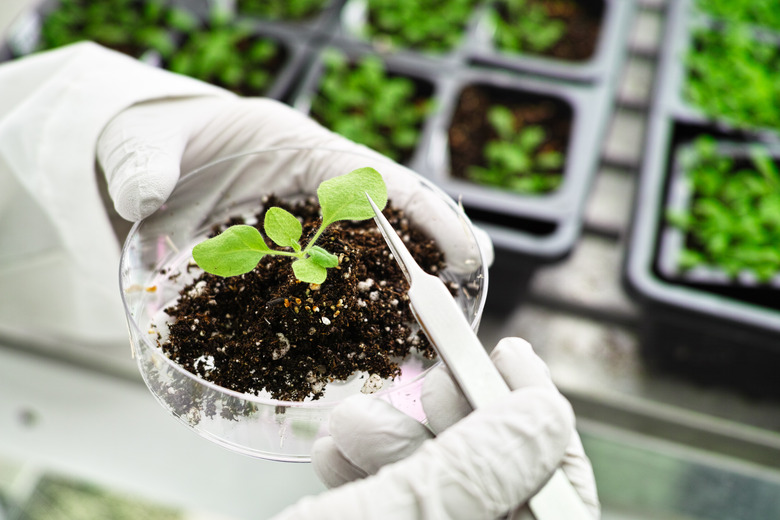
High school level biology covers all aspects of biology, including animals, plant life and humans. That should mean it's easy to come up with a science fair project or a classroom research project, but the amount of topics sometimes makes it even harder. When you first start researching, you'll find thousands of ideas and it's difficult to decide which one is best for your situation. Provided that you know what you want to do and what your teacher or judges are looking for, it's easy to come up with a great biology experiment.
Effects on Plants
Test the effects of different substances on plants. Place plants from the same source in pots of the same size, then use different types of materials. You can test different types of potting soil against regular dirt or use the same type of potting soil and test other substances. Water the plants with different types of bottled water and tap water from your home and other homes or add a small amount of vinegar and other liquids to see how the plants react to those substances. Observe the effects of the different substances on the plants and measure how quickly each plant grows in comparison to the others.
Water Bottles
Test the amount of germs and toxins found when you refill a water bottle. Start by taking a sample swab from the outside lip of the bottle and looking at the water under a microscope for any bacteria or impurities. Then drink from the bottle as you otherwise would and test the bottle each time you refill it with extra water. Student athletes can even use the same plastic water bottles they carry with them to practice every day. Each time, you'll want to swab the inside lip of the bottle and look at the swab under a microscope. Identify any bacteria or toxins by looking at the examples found in your textbook.
Public Germs
You might be surprised when you check different public areas for germs. Take swabs at public bathrooms, in your classroom, on the door handles at stores and even books at the public library. Look at the swabs under a microscope and see what types of germs you find. Then offer a comparison of the germs and explain your findings. Discuss which germs are harmful and what levels of germs you found.
Do a biology experiment focusing on how the hair reacts to different types of products. Test shampoos, conditioners, hair gels, hair sprays and other products. Look for residue left behind by the product, but take a few sample hairs before you begin. Check the consistency and health of the sample hairs under a microscope and compare those results against hairs after using the products. Observe any changes you notice in the look or feel of your hair, as well. Then look for signs that the hair has become more damaged or healthier since you used the product. You'll need to narrow it down to just a few products, but if you have more time, use one product for several days before switching to another.
- Terimore Institute Inc: Biology Science Fair Ideas
Cite This Article
Eblin, Jennifer. "High School Biology Experiment Ideas" sciencing.com , https://www.sciencing.com/high-school-biology-experiment-ideas-6395060/. 13 March 2018.
Eblin, Jennifer. (2018, March 13). High School Biology Experiment Ideas. sciencing.com . Retrieved from https://www.sciencing.com/high-school-biology-experiment-ideas-6395060/
Eblin, Jennifer. High School Biology Experiment Ideas last modified August 30, 2022. https://www.sciencing.com/high-school-biology-experiment-ideas-6395060/
Recommended

IMAGES
COMMENTS
Apr 21, 2024 · The extraction of DNA is an excellent experiment for high school students to gain a better understanding of the principles of molecular biology and genetics. This experiment helps students to understand the importance of DNA in research and its applications in various fields, such as medicine, biotechnology, and forensics. Learn more ...
These projects provide opportunities to investigate and better understand the intricate mechanisms, processes, and interrelationships within the biological world. By engaging in biology projects, students can develop essential scientific skills such as observation, experimentation, data analysis, and critical thinking.
Jan 4, 2023 · Science is no fun without practical experiments. Unlike middle school, where you limit your study and inquiry of science to the theoretical realm, high school has a different scene. Experiments are a major part of studying science in high school, and biology all the more so. Biology is fascinating. It makes us wonder at the ... <a title="10 Awesome Biology Experiments Ideas For High School ...
Okay, this is the hardest part of the whole project…picking your topic. But here are some ideas to get you started. Even if you don’t like any, they may inspire you to come up with one of your own. Remember, check all project ideas with your teacher and parents, and don’t do any project that would hurt or scare people or animals. Good luck!
Feb 15, 2024 · Starting a biology research project is an exciting step into discovering new insights about the natural world. Here’s how to get your project off to a great start, focusing on research ideas in biology for high school students. Select Your Topic Carefully: Choose a topic that grabs your interest and is doable. Think about what resources you ...
Jun 21, 2022 · Scientific Method and High School Biology Experiments. Much of high school biology is focused on instilling the elements of science in students. The scientific method is one of these main focuses. The method prompts participants in science to be investigators and to come up with a guess about what will happen in a given experiment, called a ...
Nov 30, 2022 · Biology and biomedical research are two of the most popular academic disciplines among high schoolers. If you’re someone who’s interested in those fields and you’re looking for research opportunities this summer, you’ve come to the right place!
Don’t worry about evaluating them at this stage—simply let your creativity flow and write down any biology-related topics or questions that pique your interest. Explore existing projects: Look for inspiration from previous biology projects that have been conducted by students or researchers. Search online databases, science fair websites ...
These topics are ever-evolving, so it’s crucial to delve into specific areas within them that align with your interests and expertise. What are life science projects? Life science projects explore the living world, ranging from simple observations to complex experiments. They: Focus on living organisms. Follow the scientific method. Vary in ...
Mar 13, 2018 · High school level biology covers all aspects of biology, including animals, plant life and humans. That should mean it’s easy to come up with a science fair project or a classroom research project, but the amount of topics sometimes makes it even harder. When you first start researching, you’ll find thousands of ideas and it’s difficult to decide which one is best for your situation.